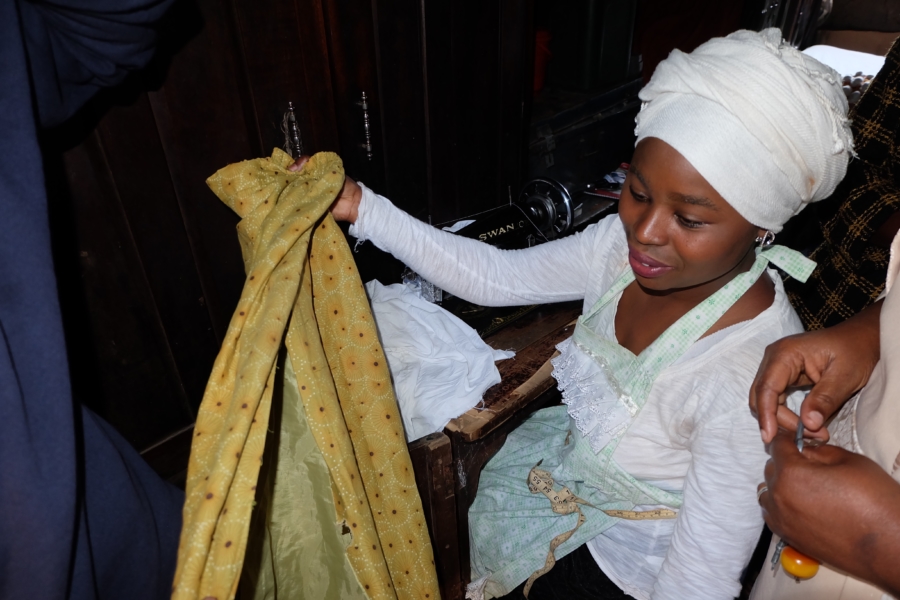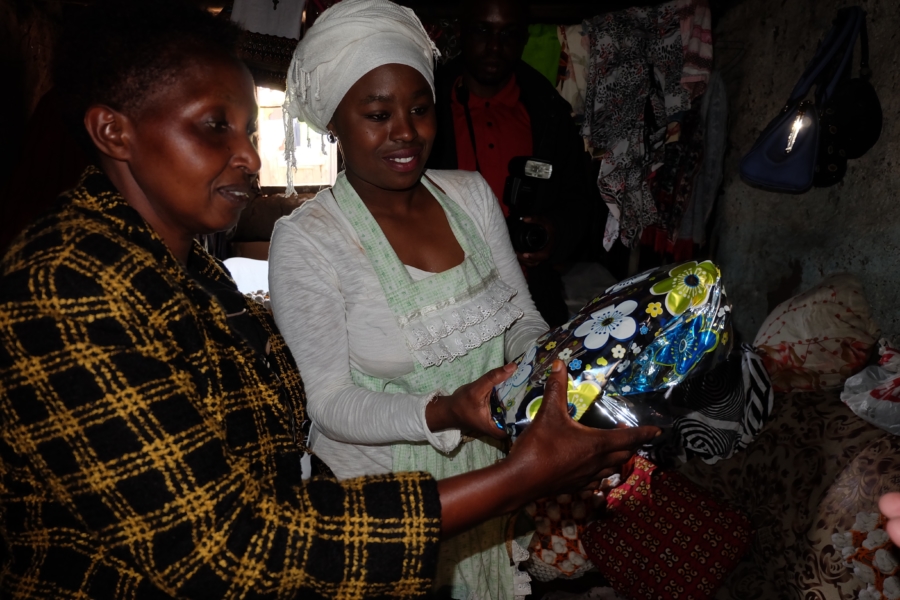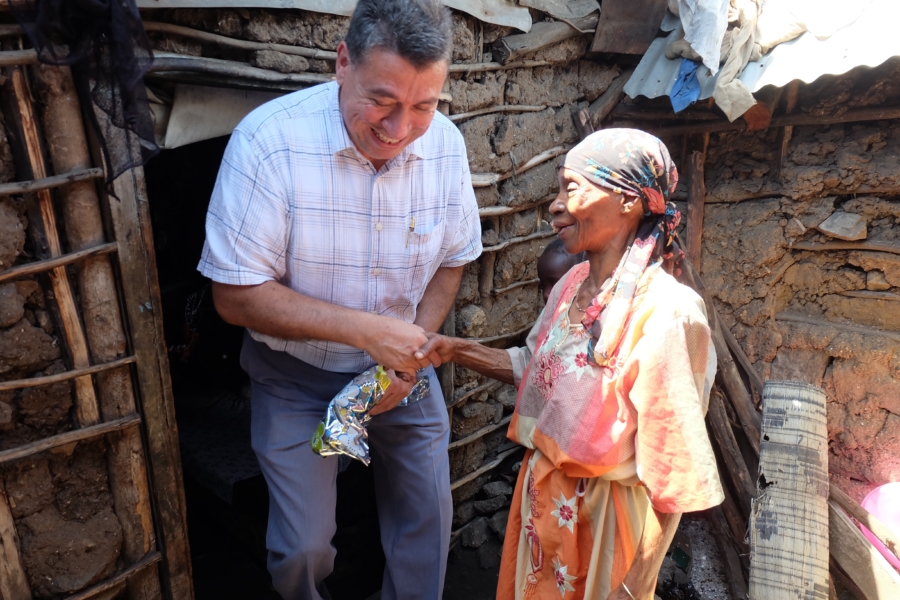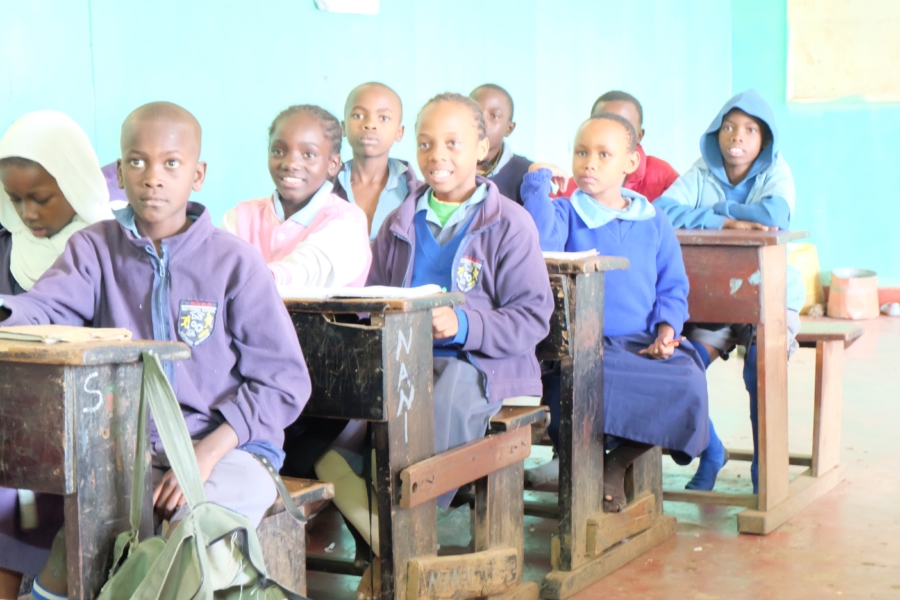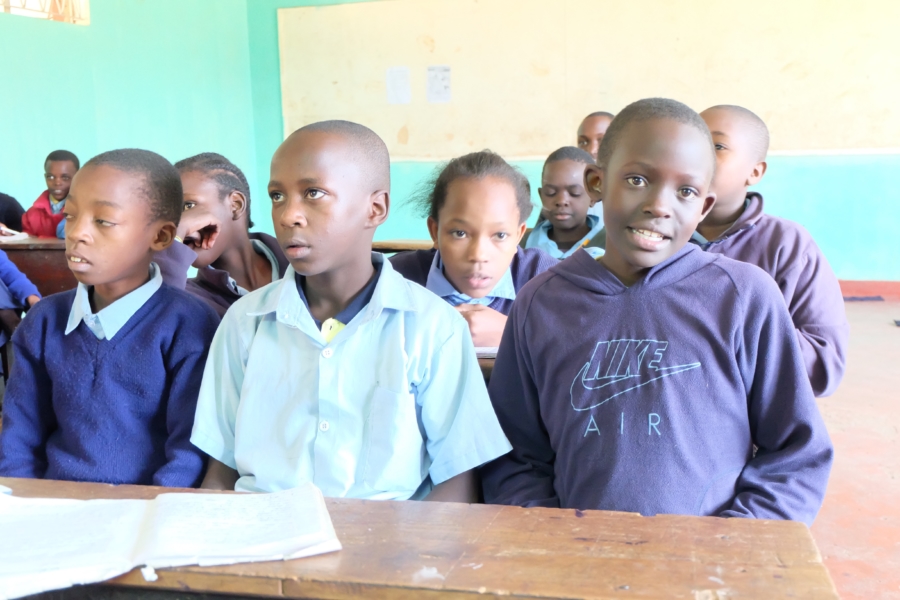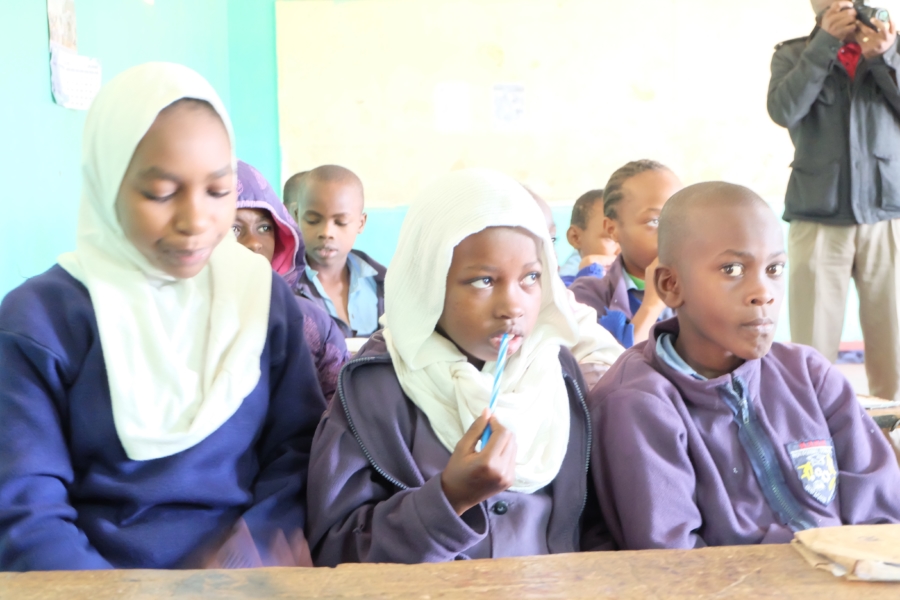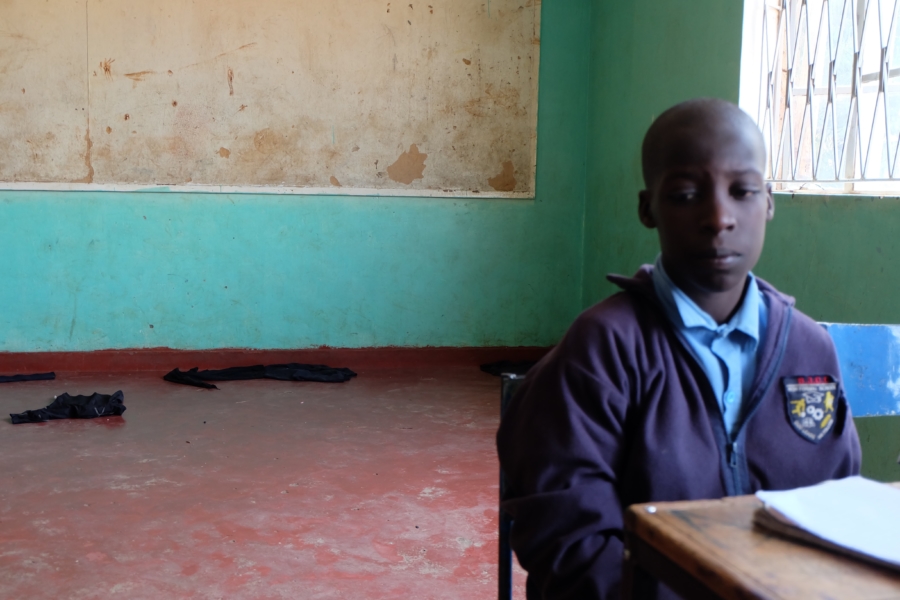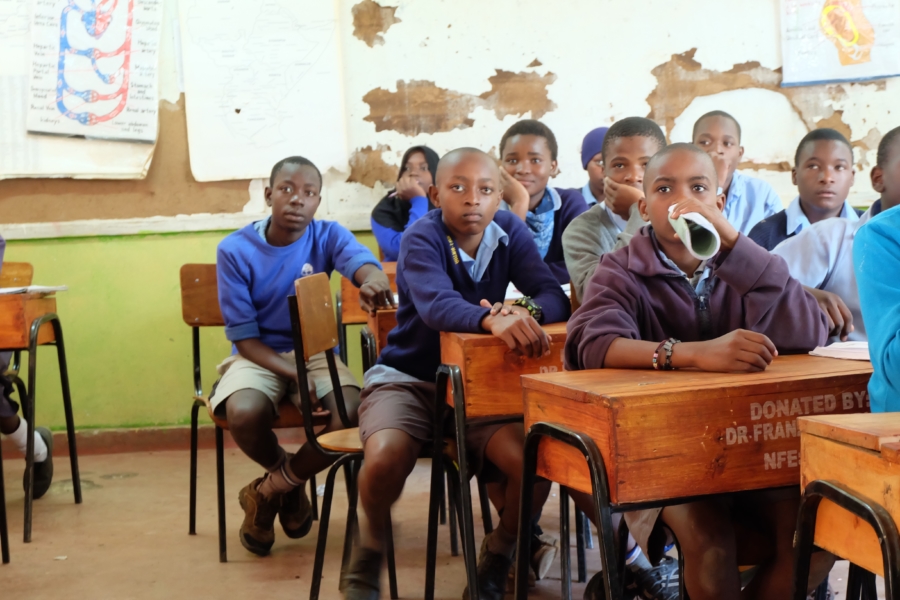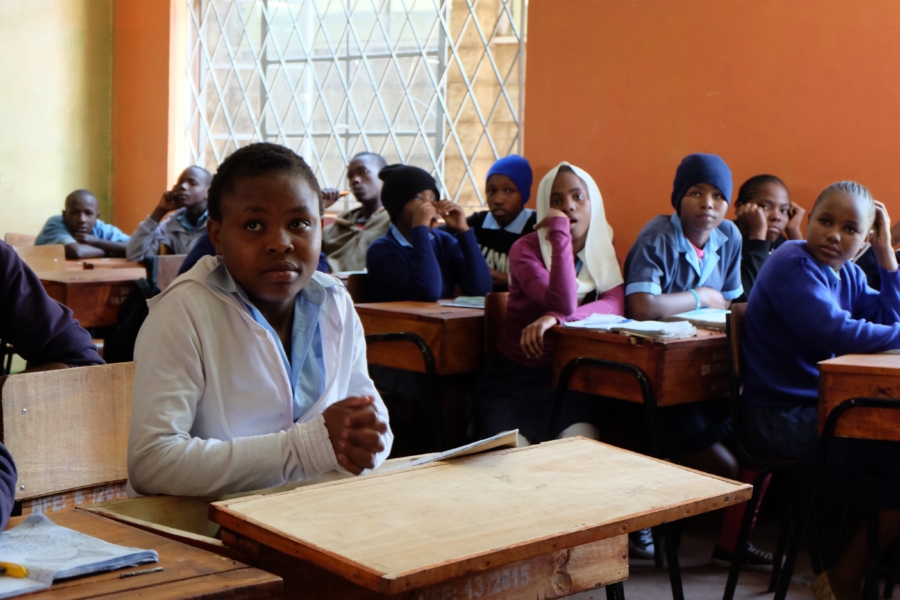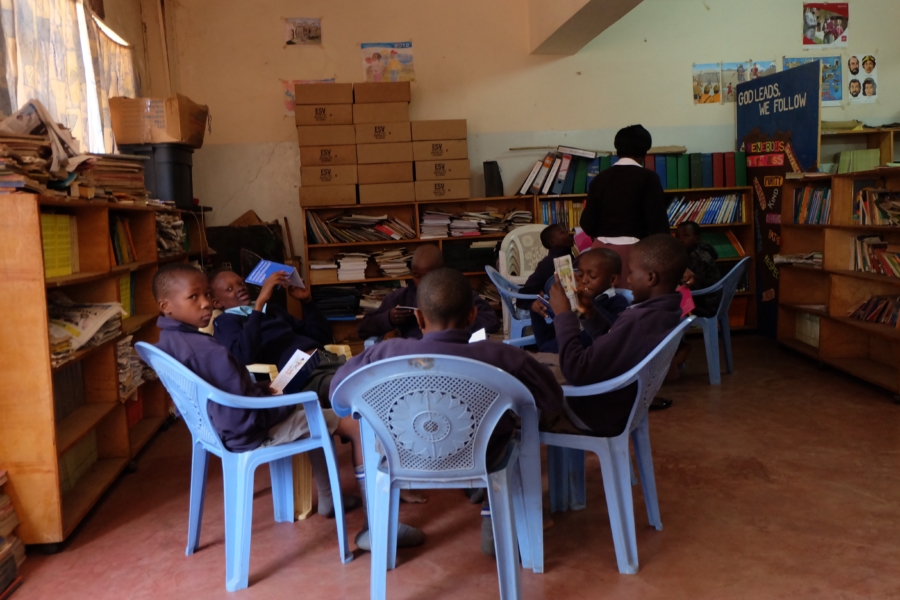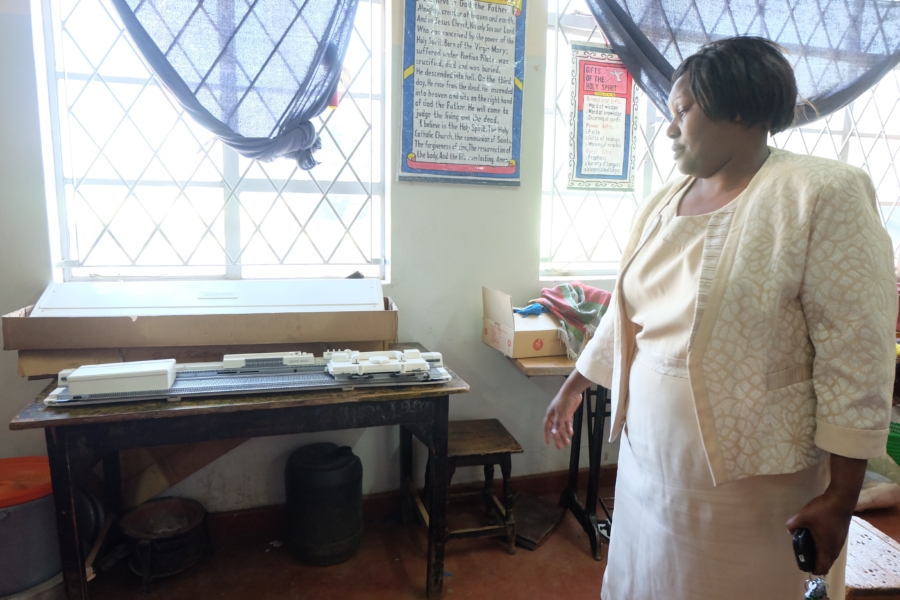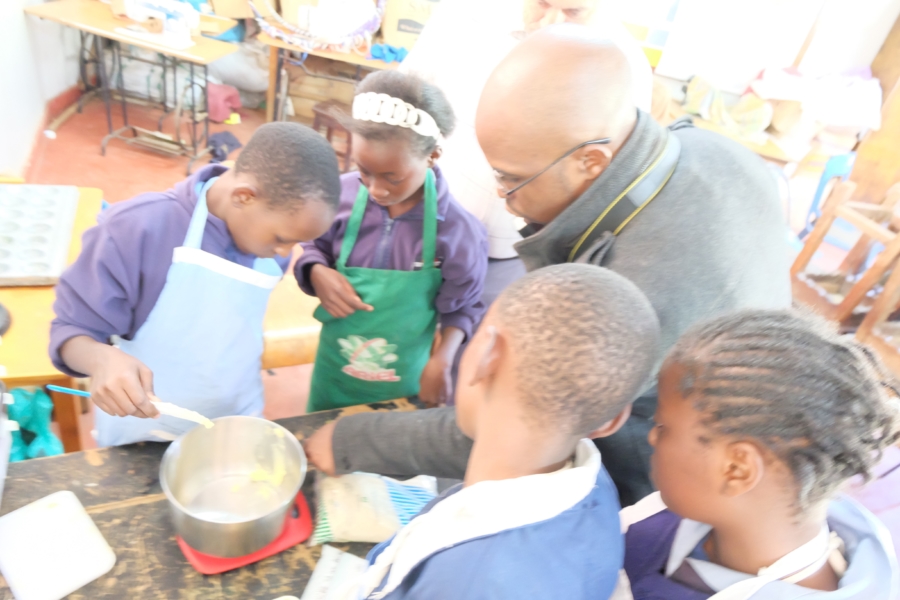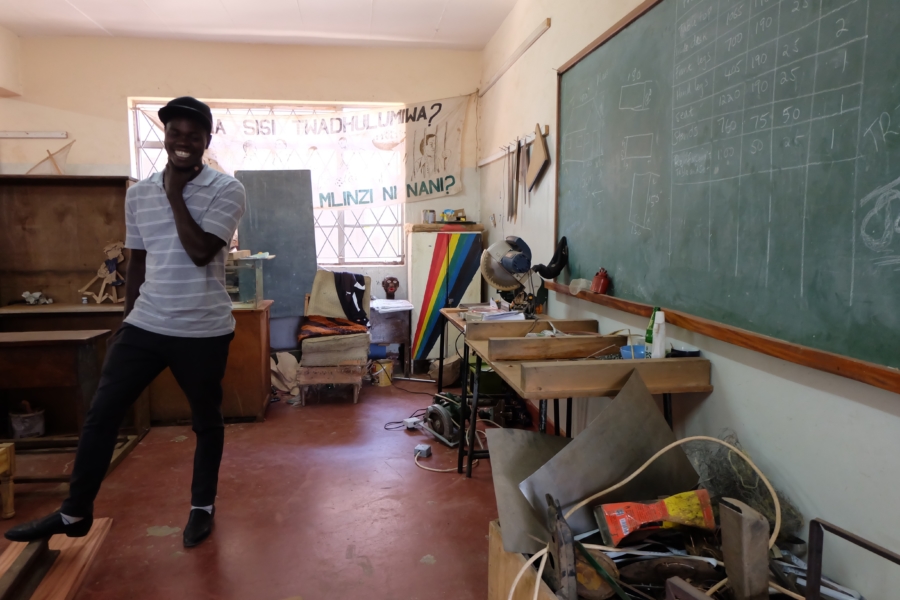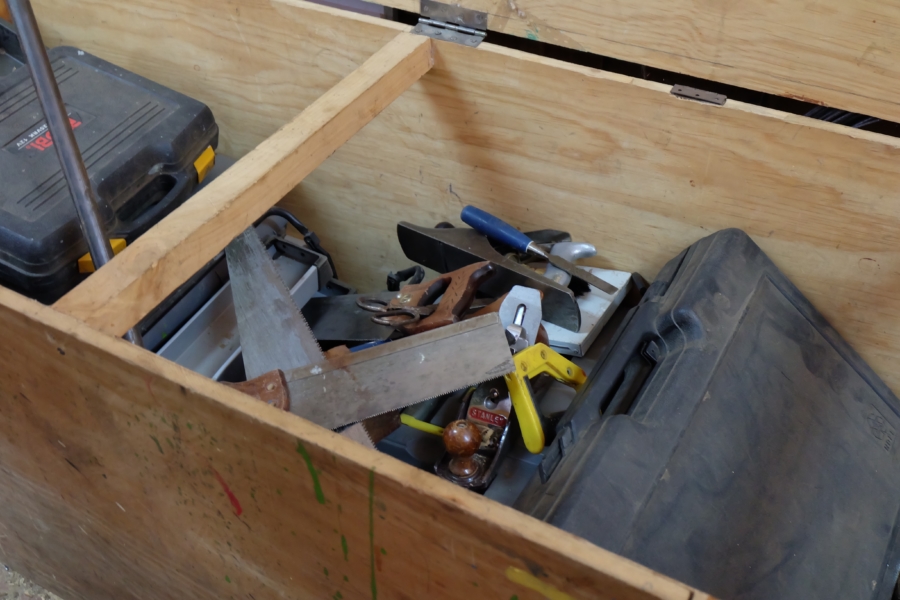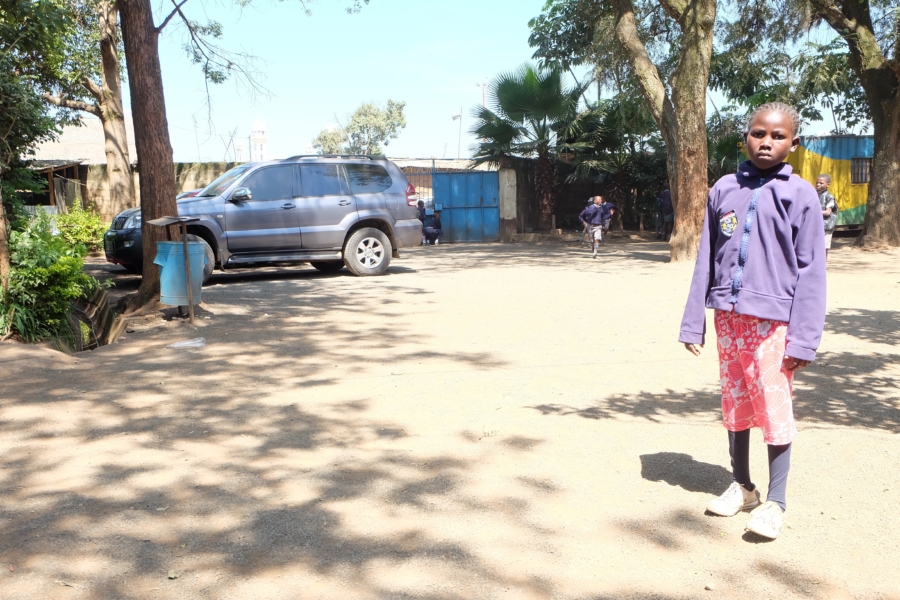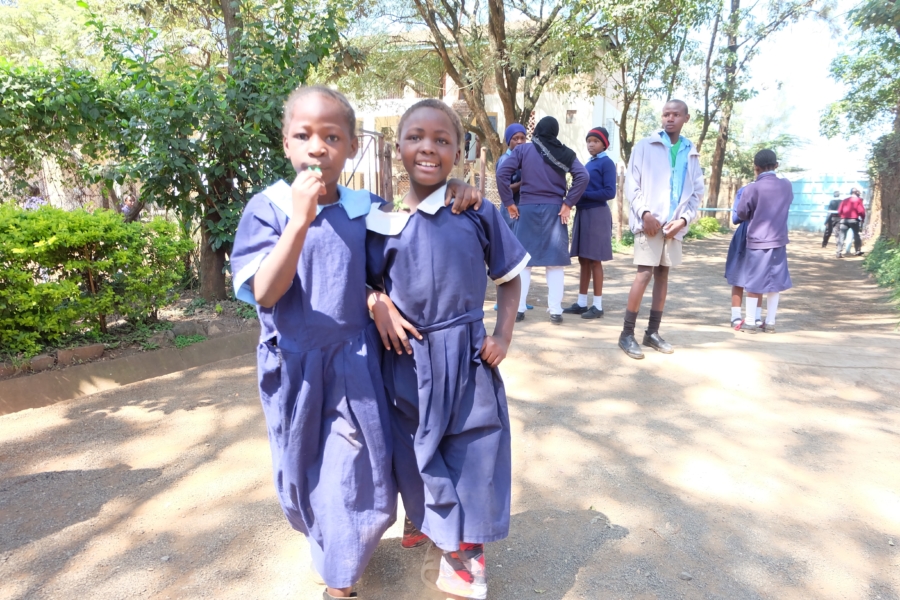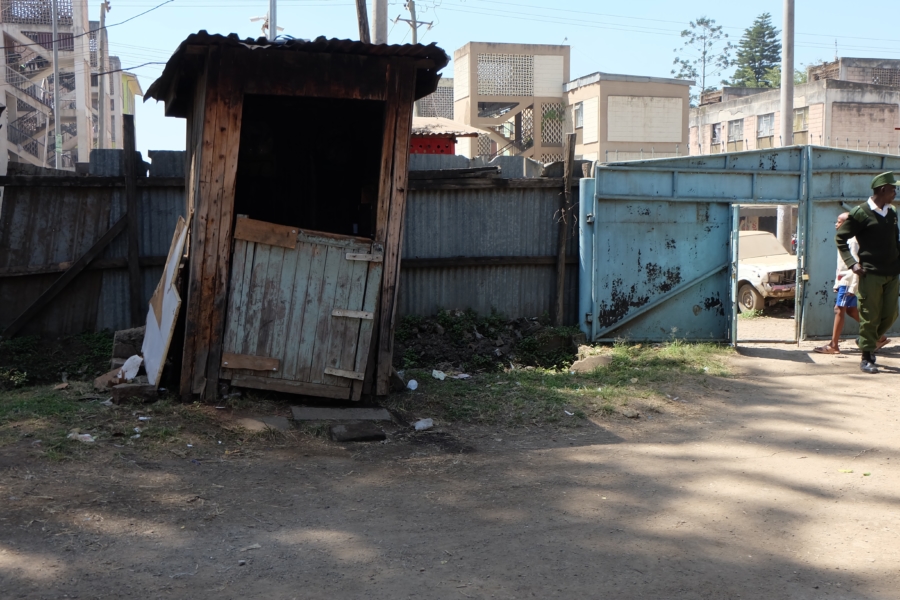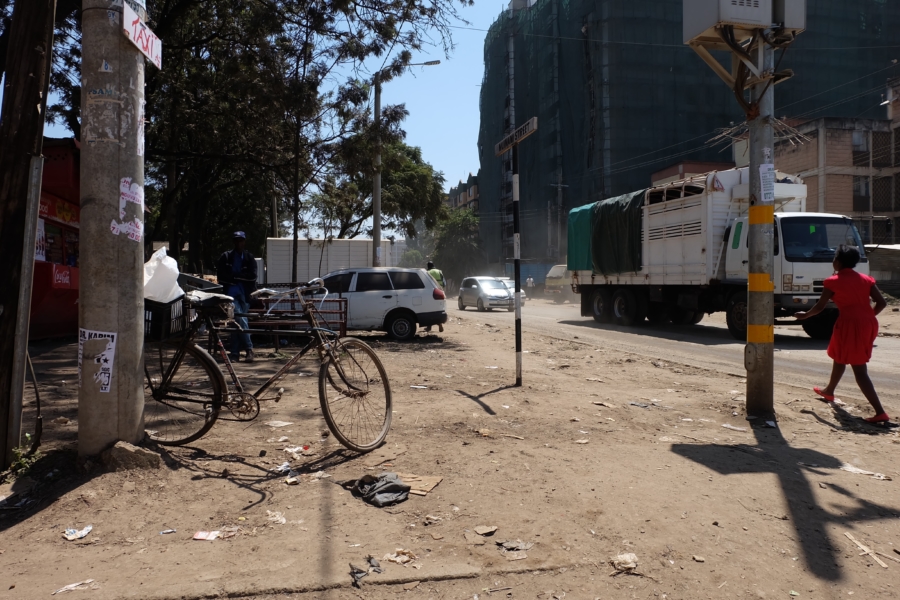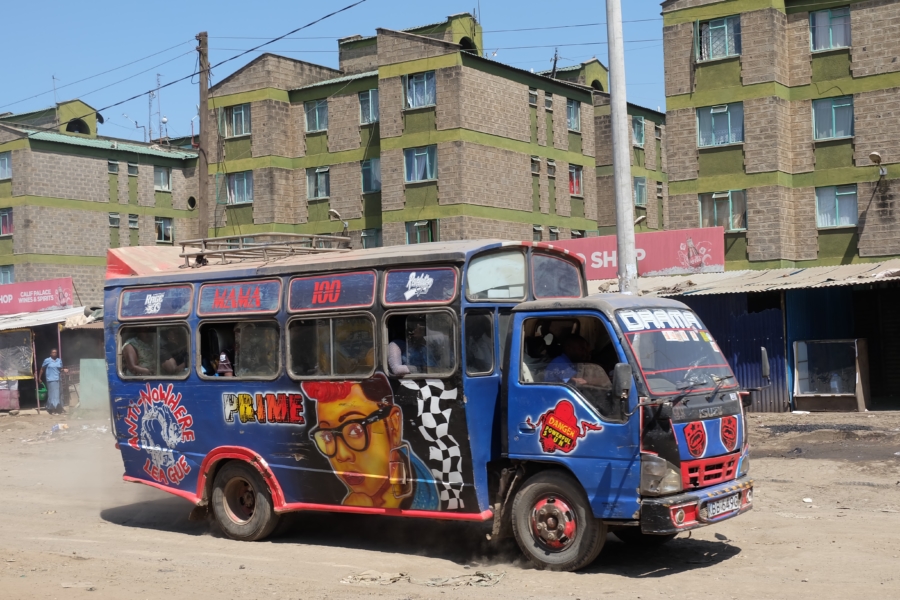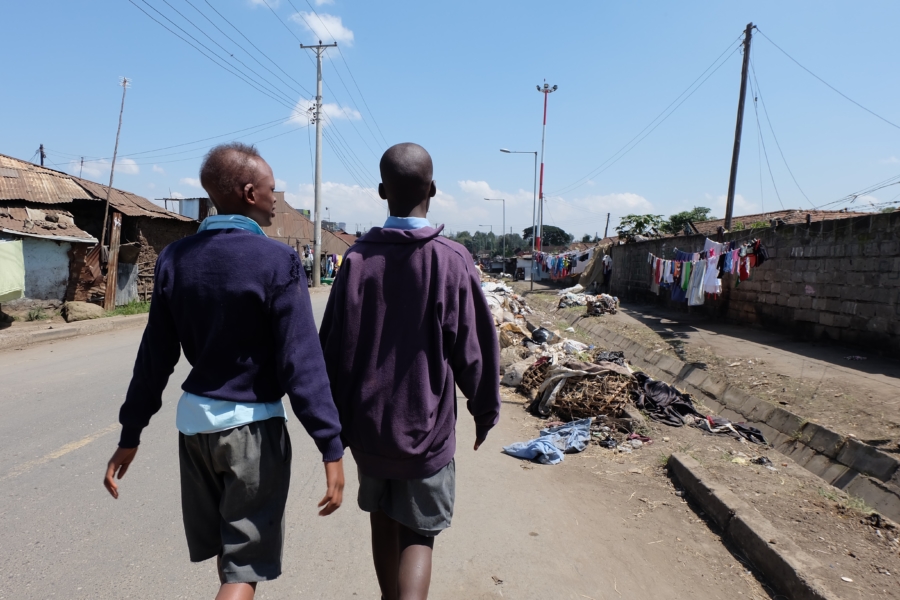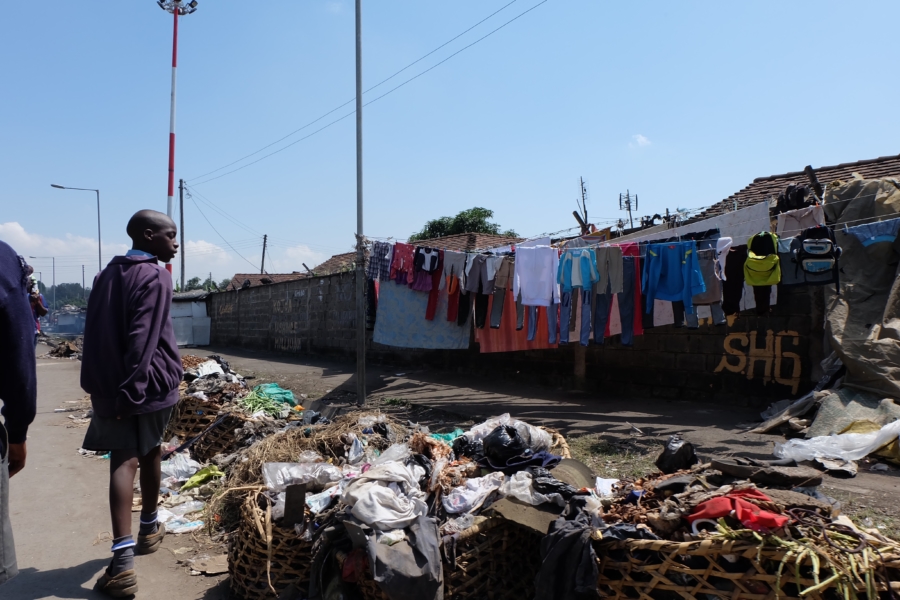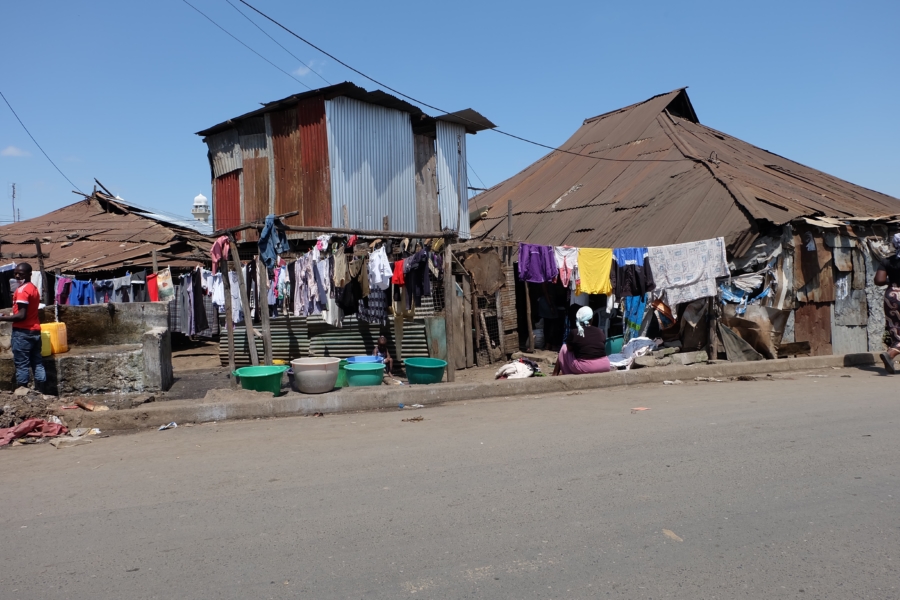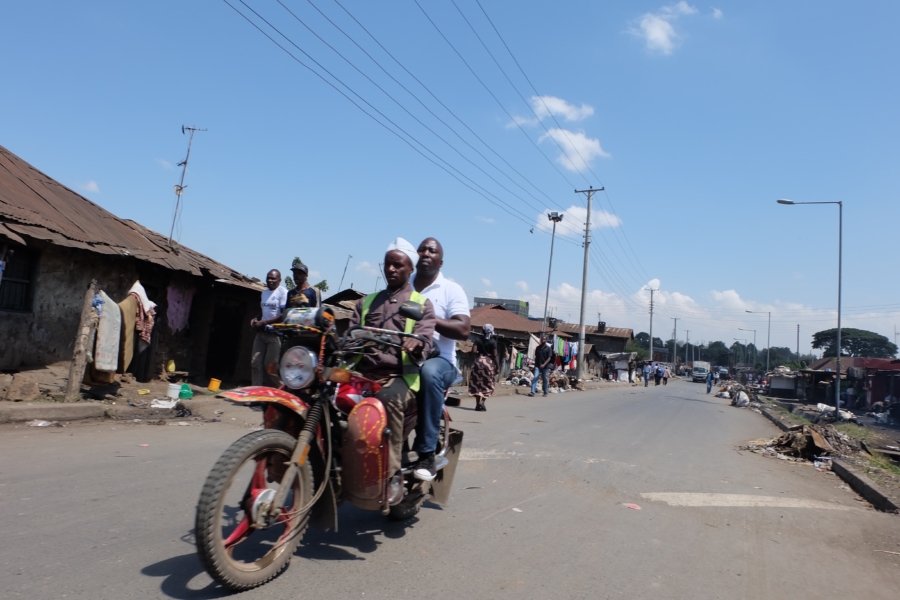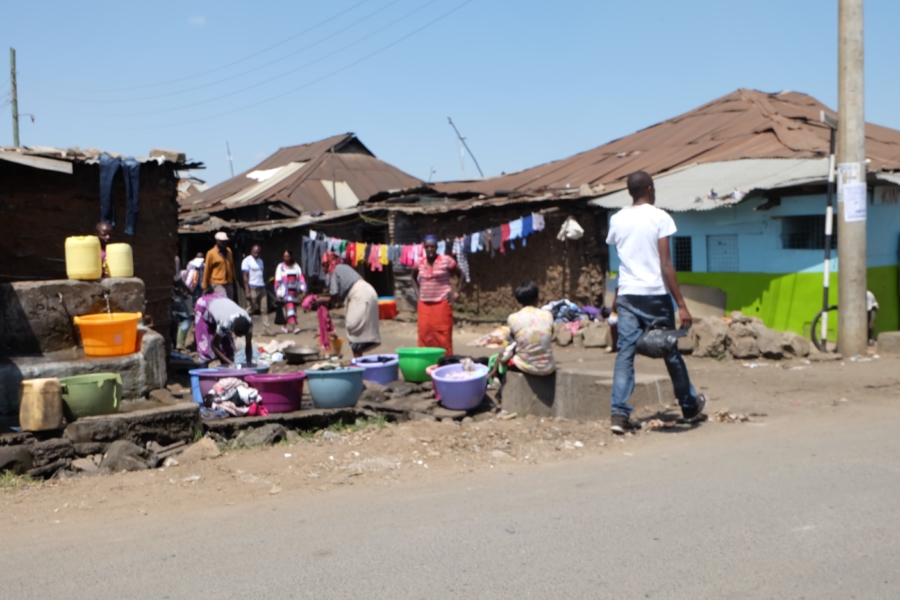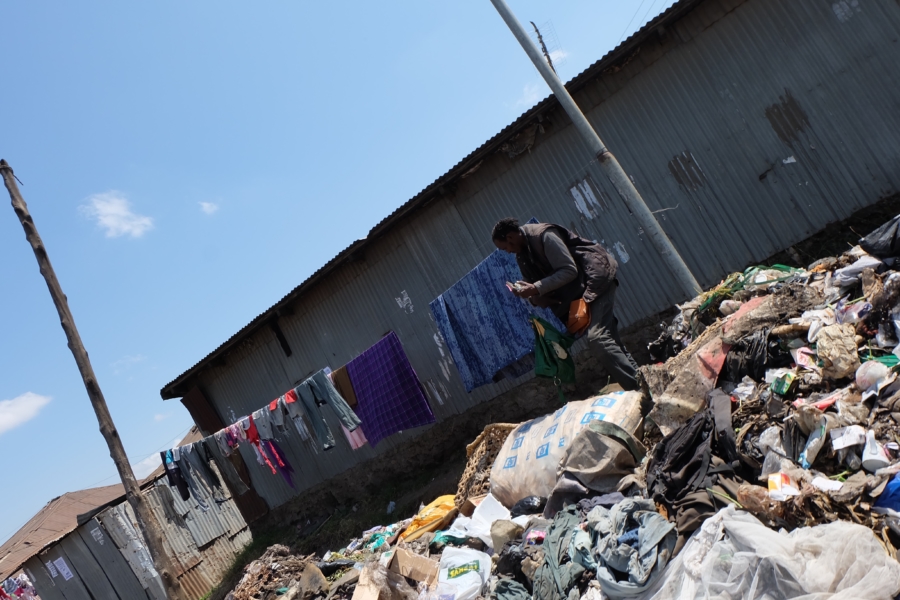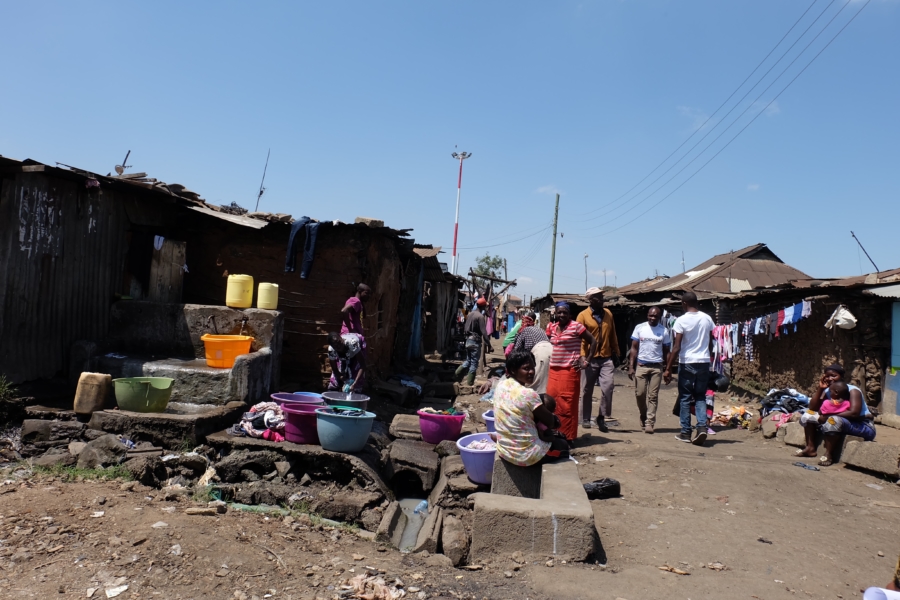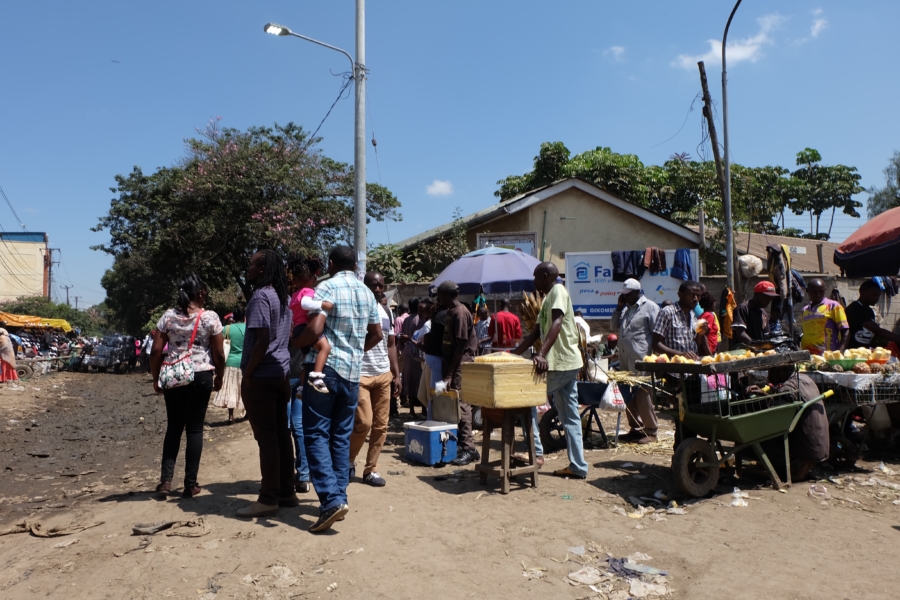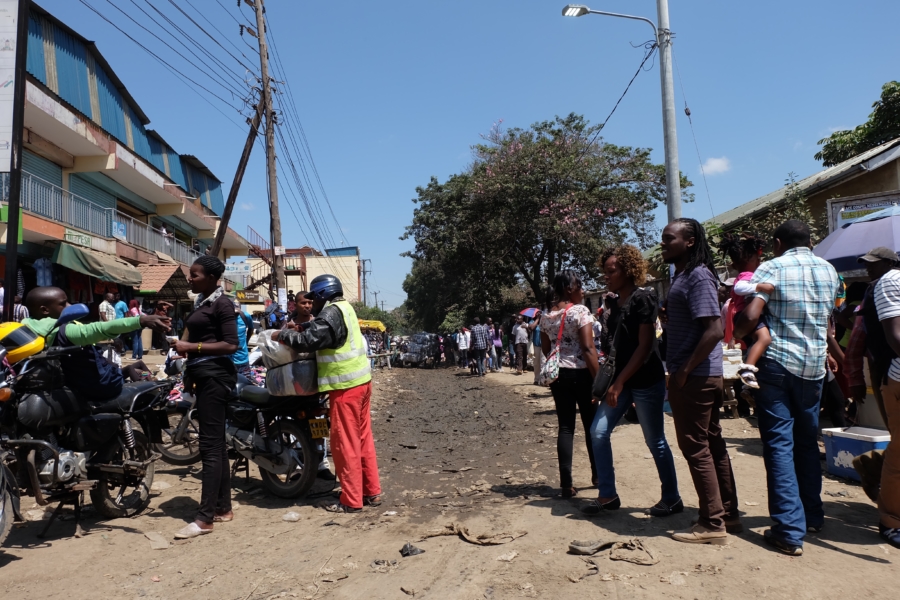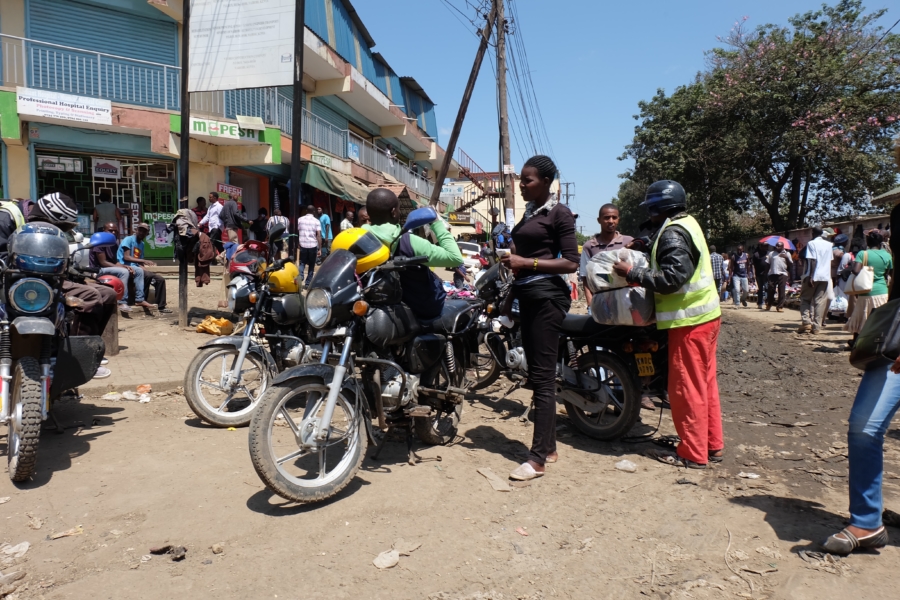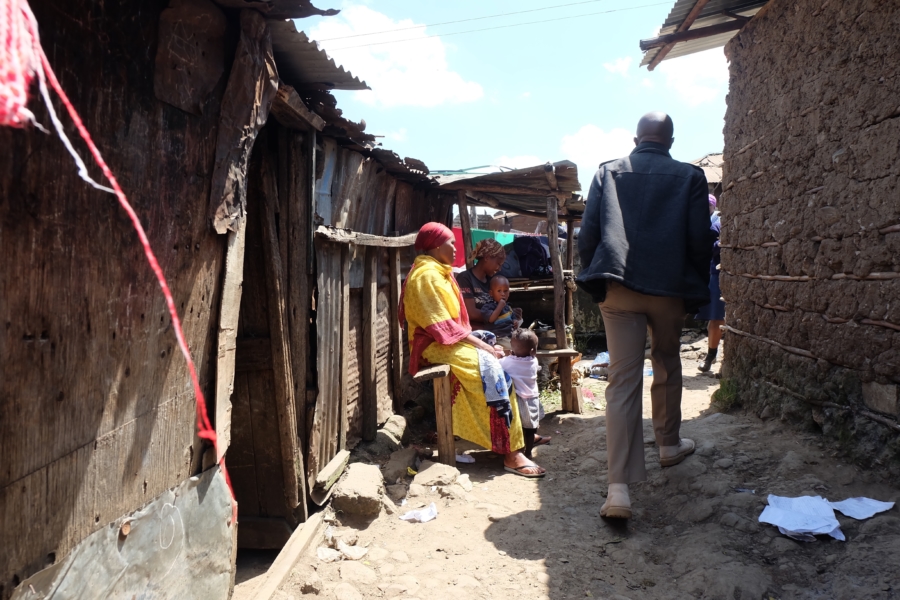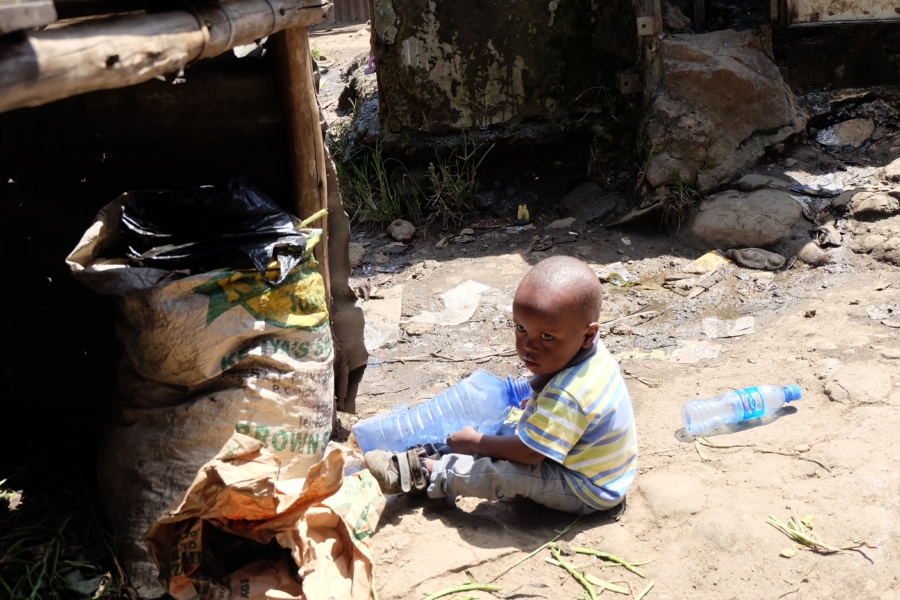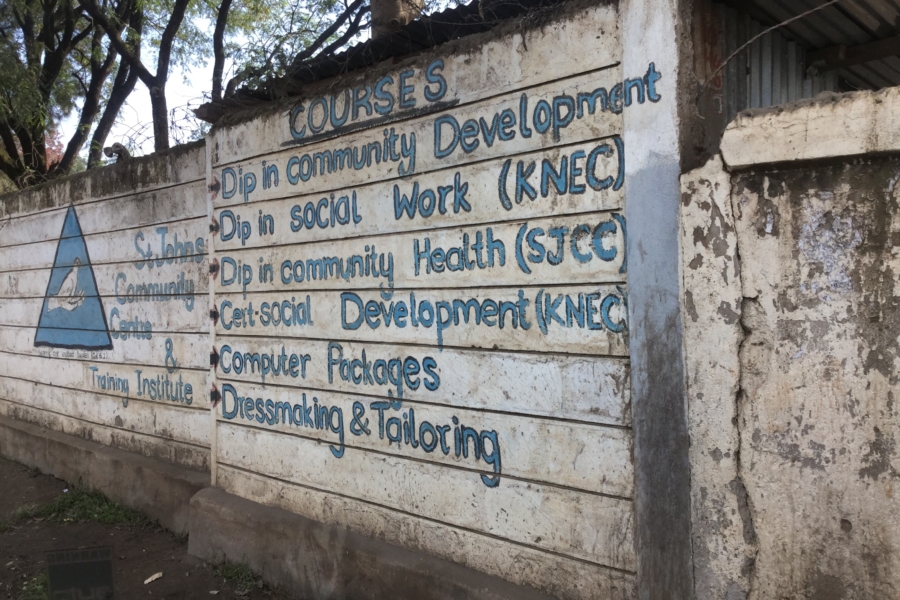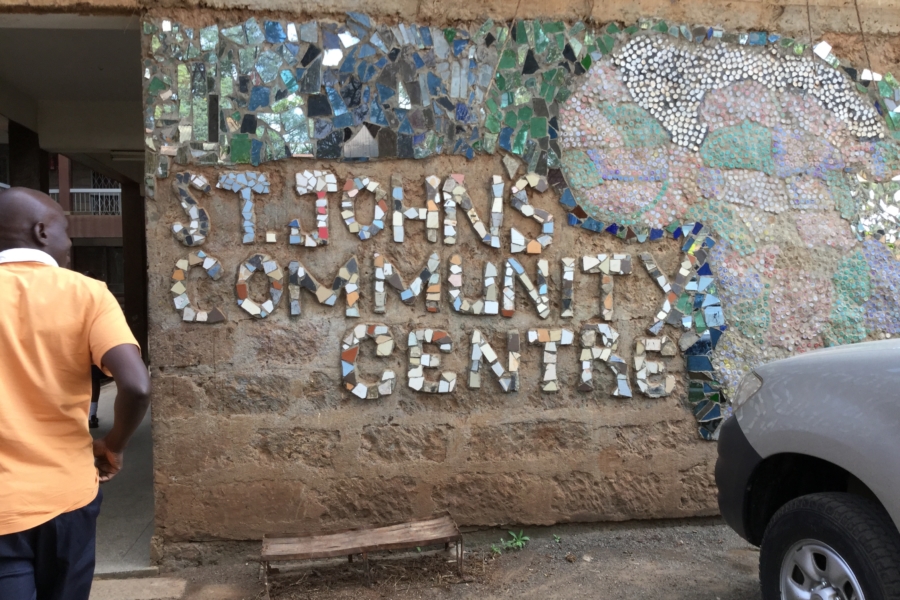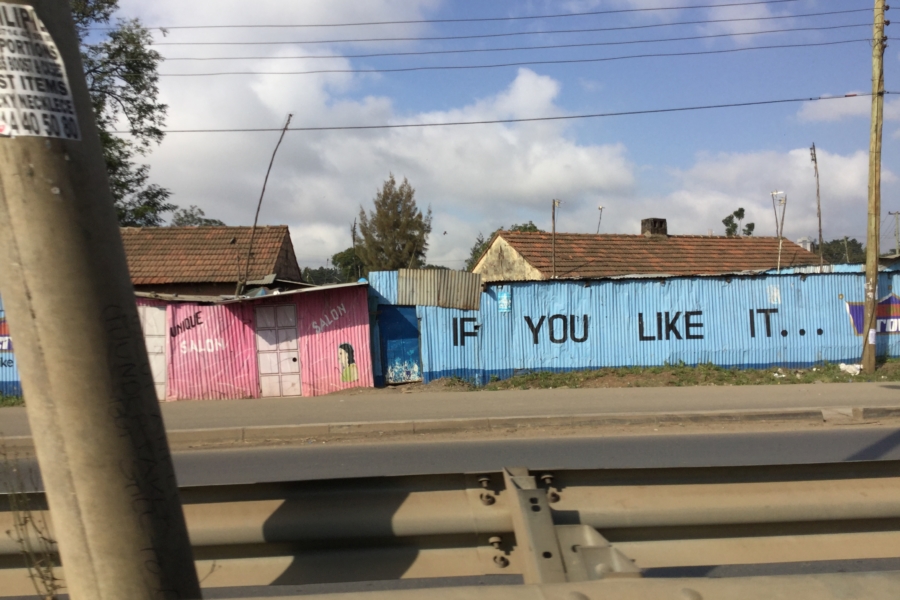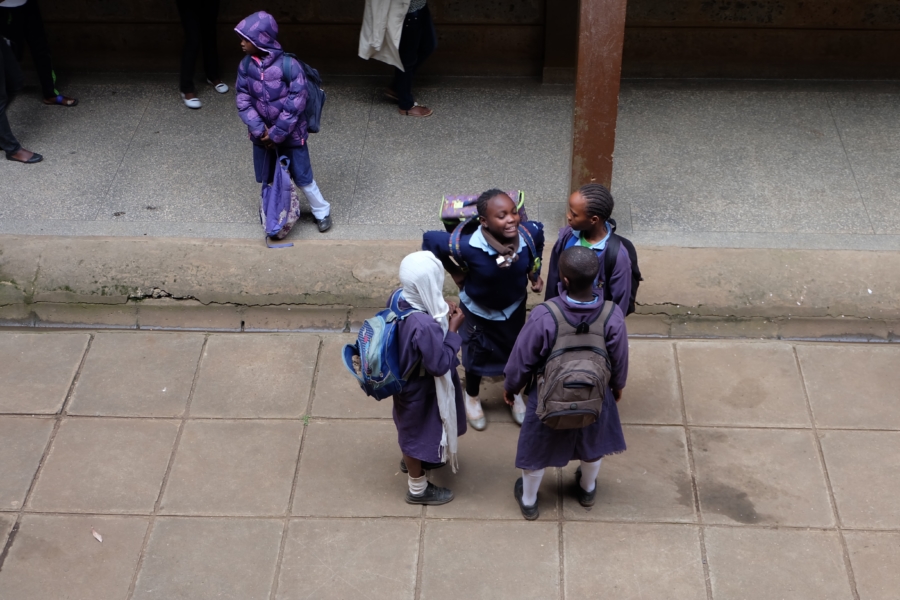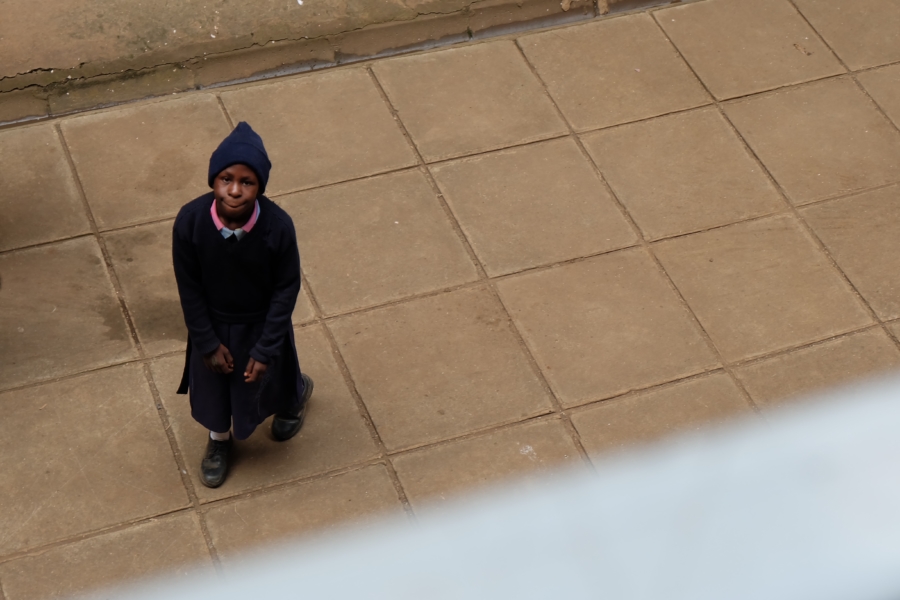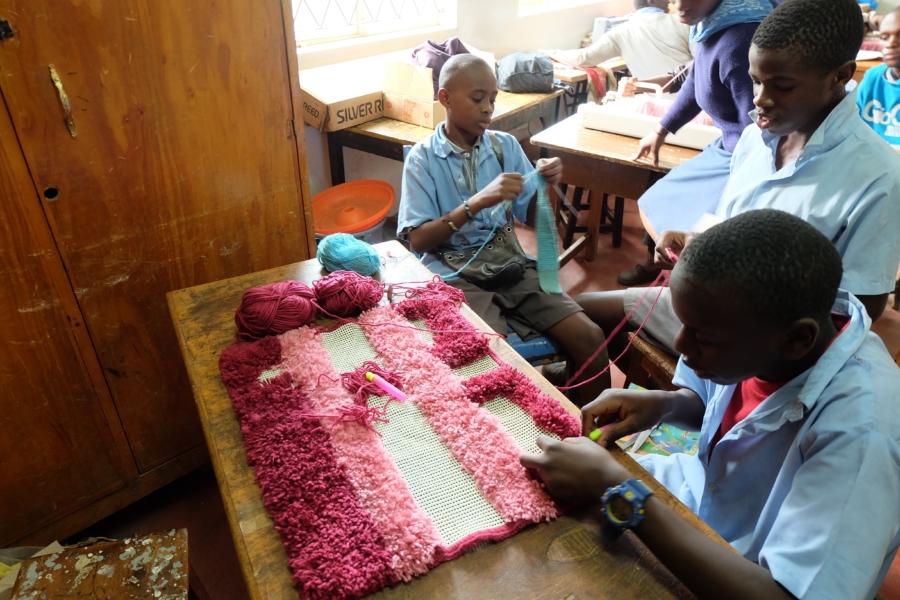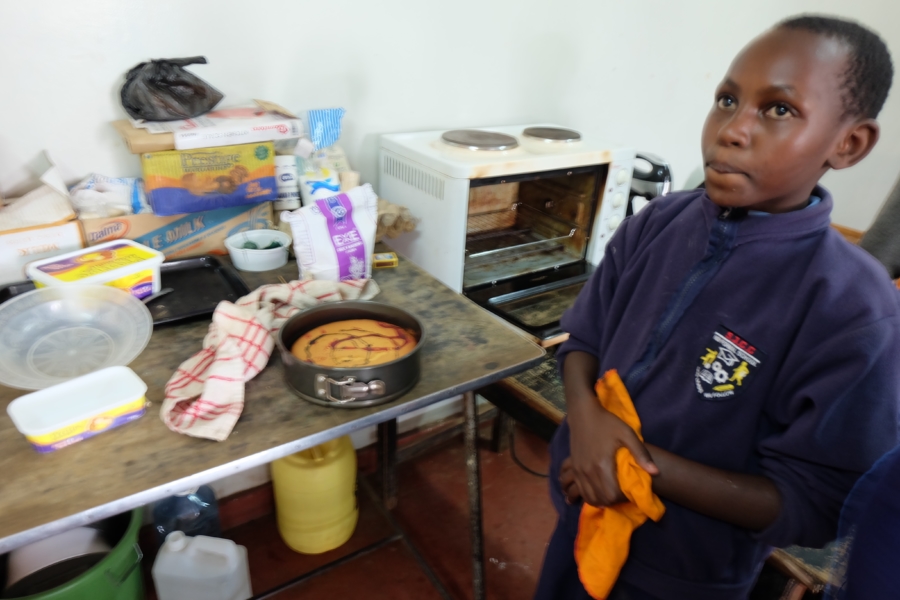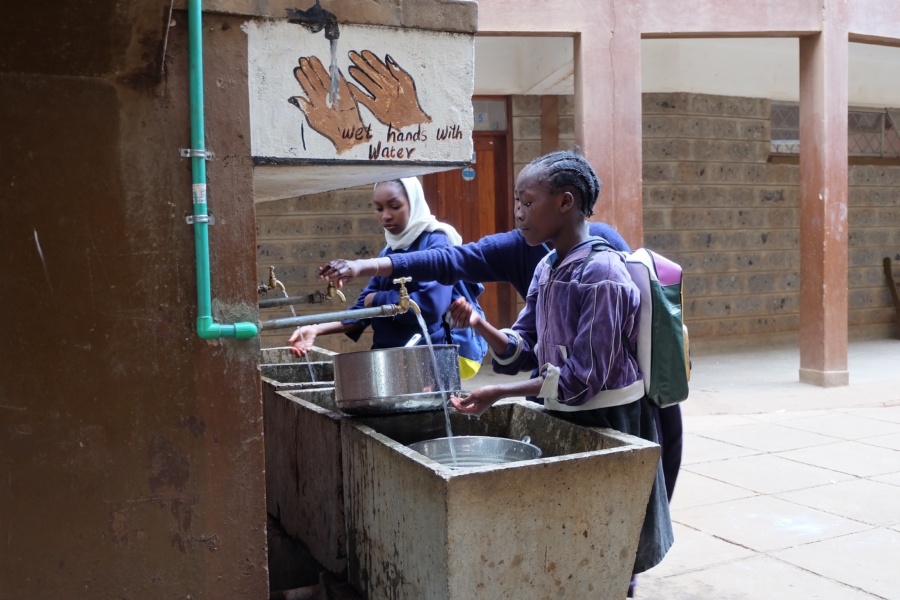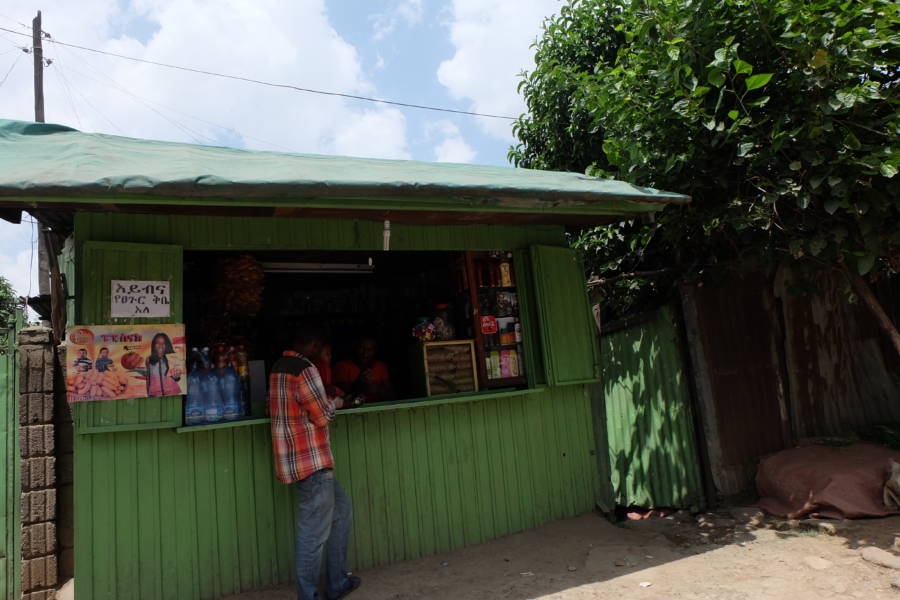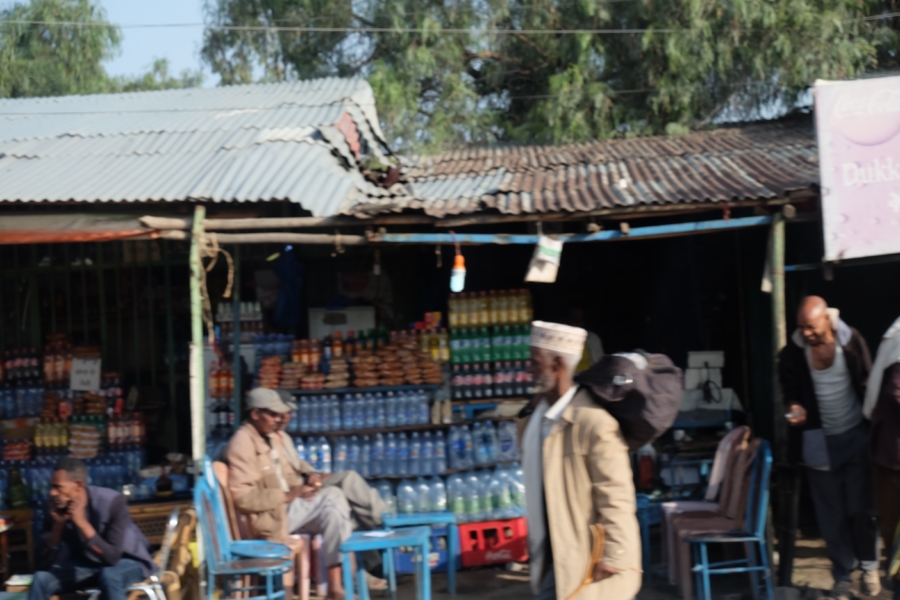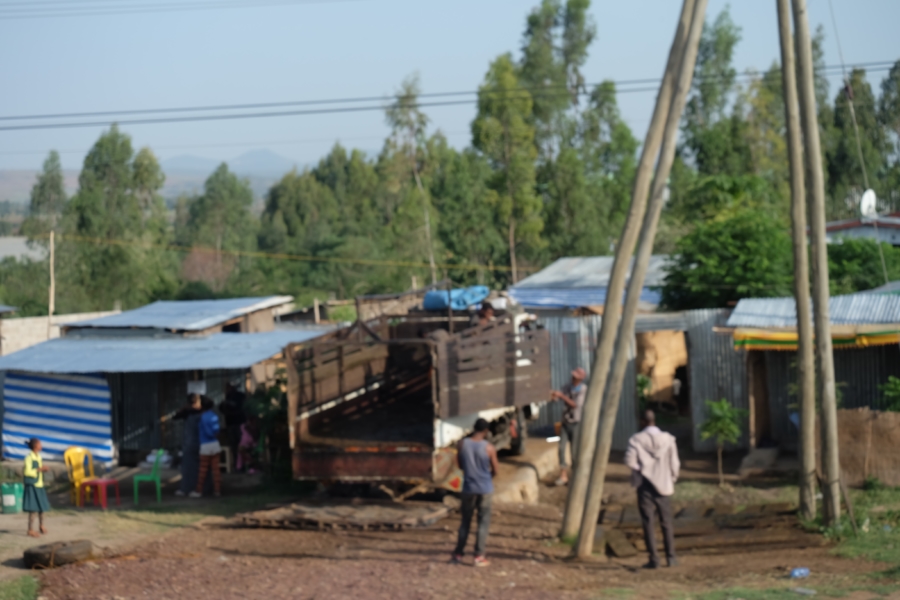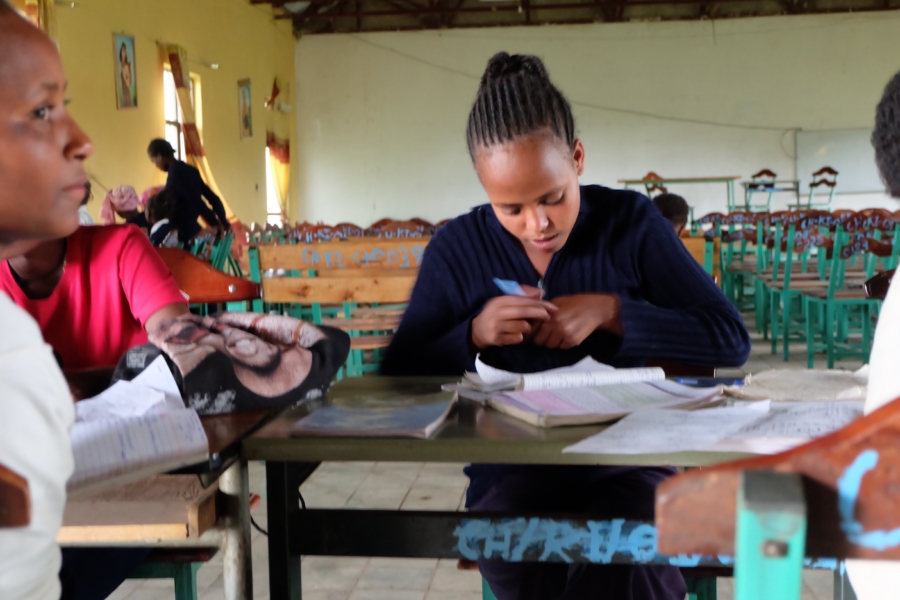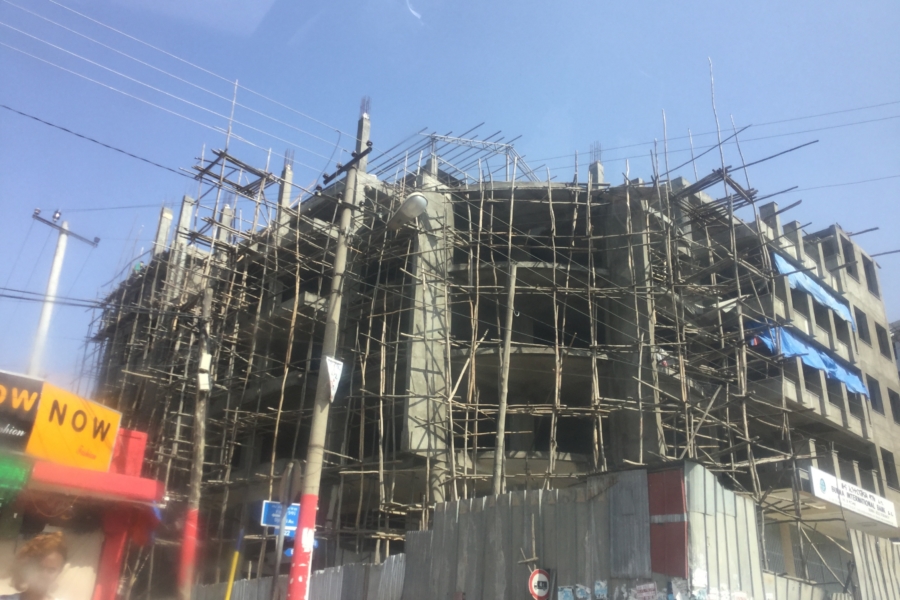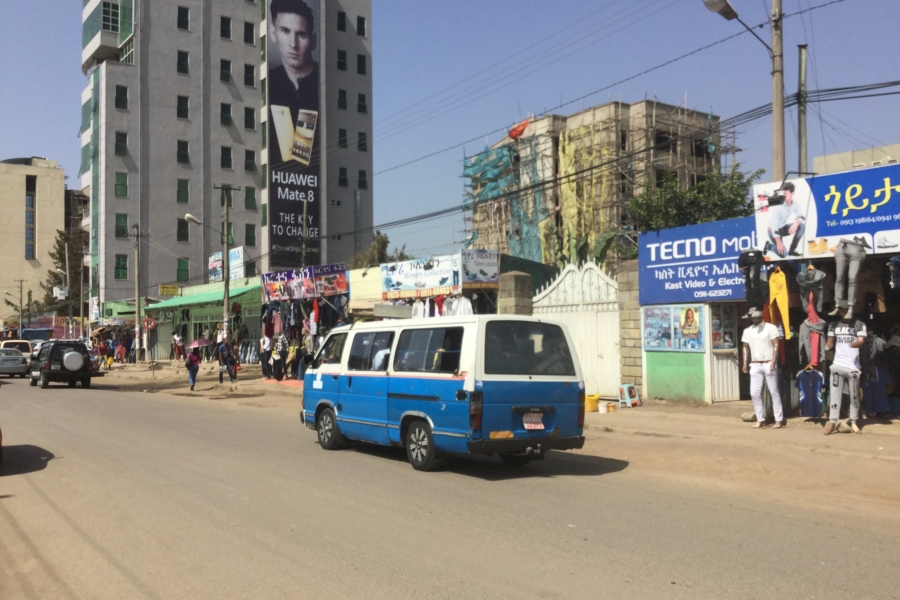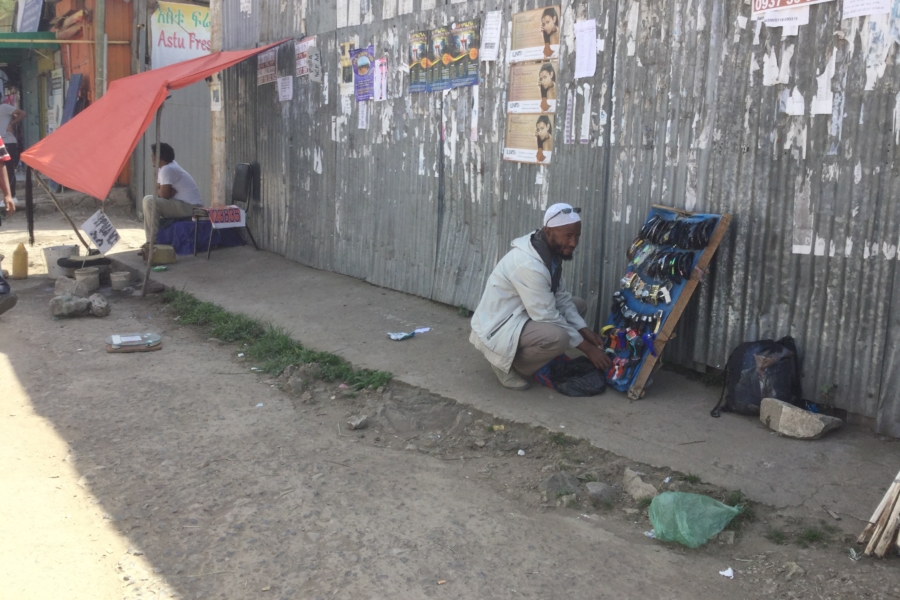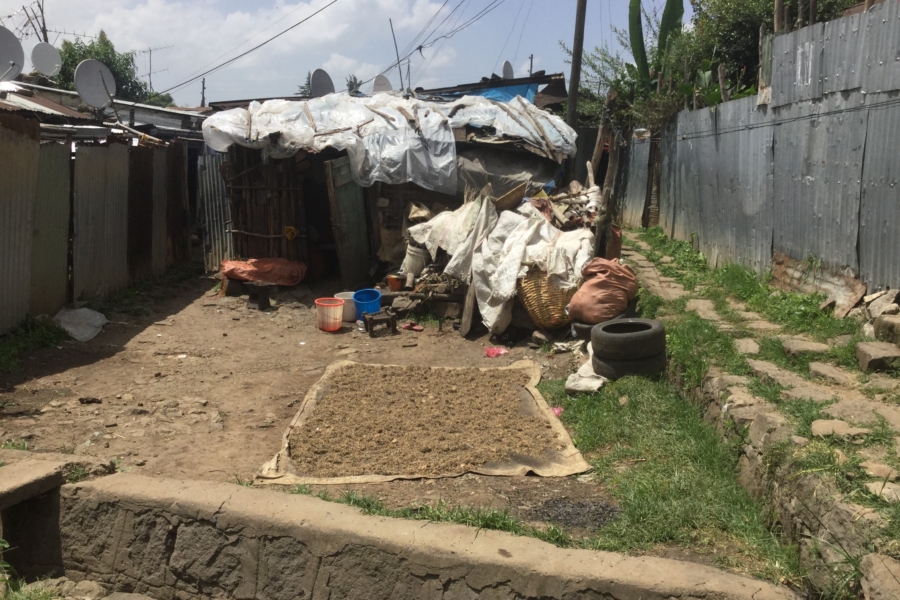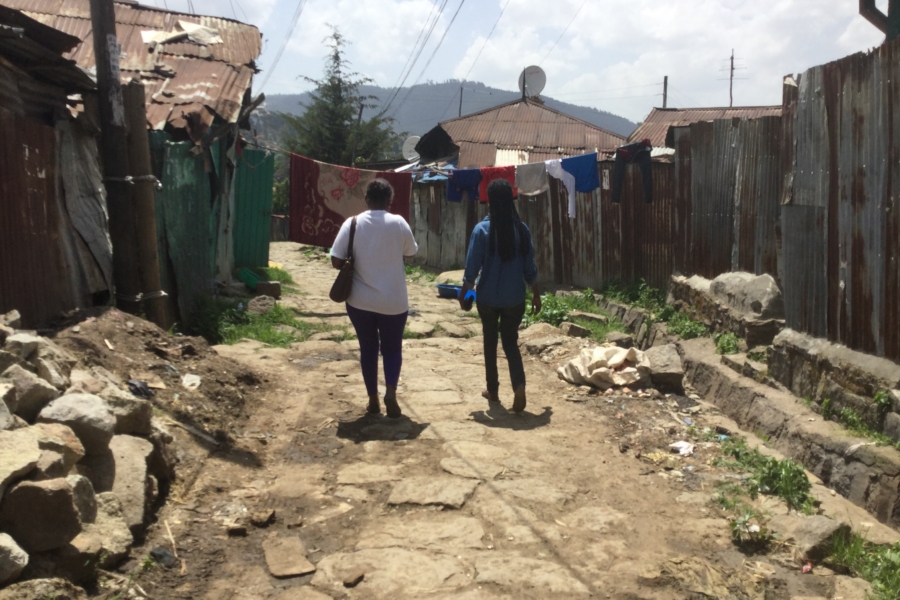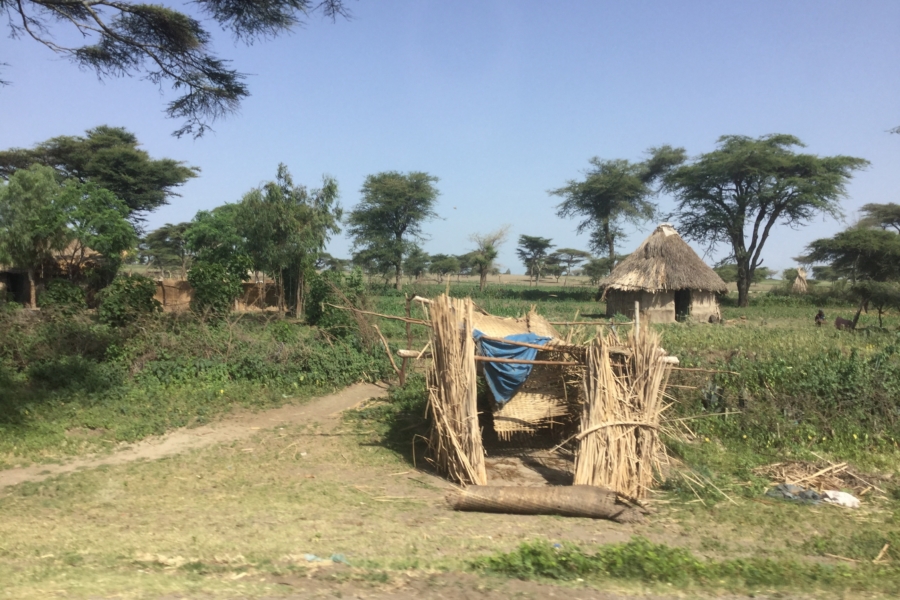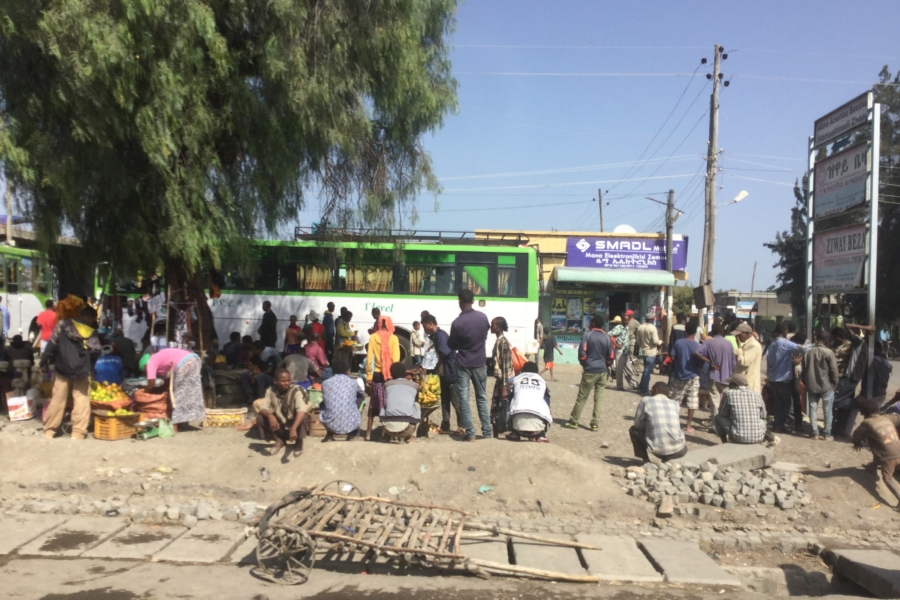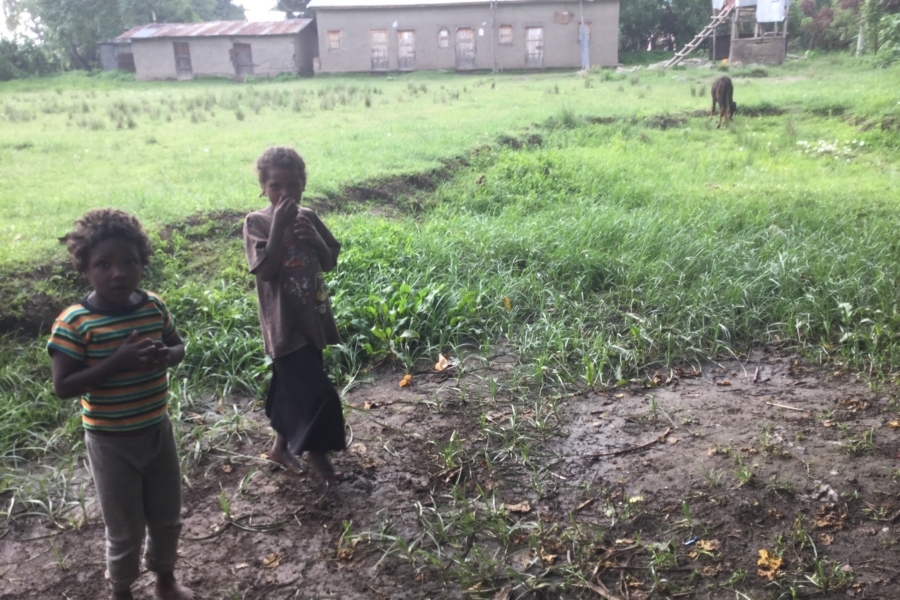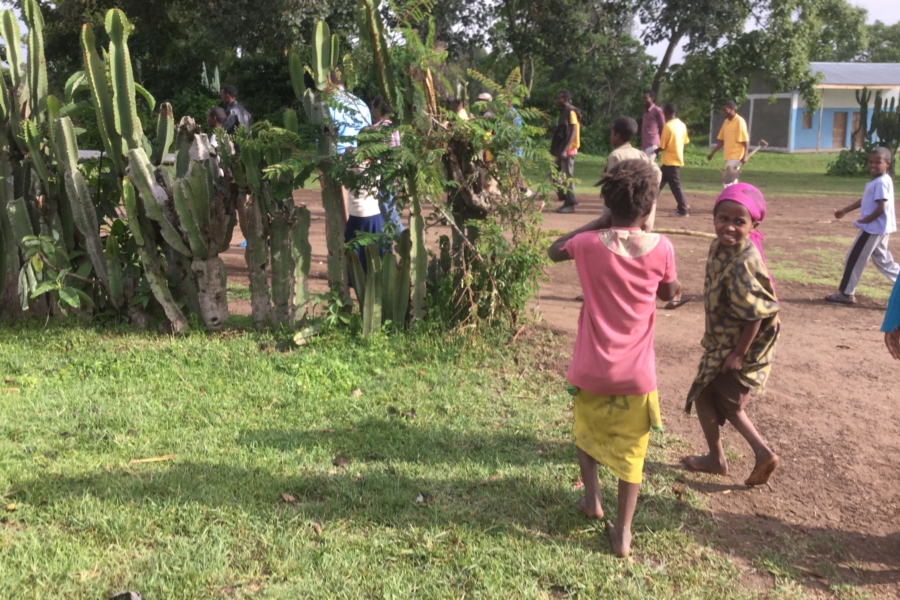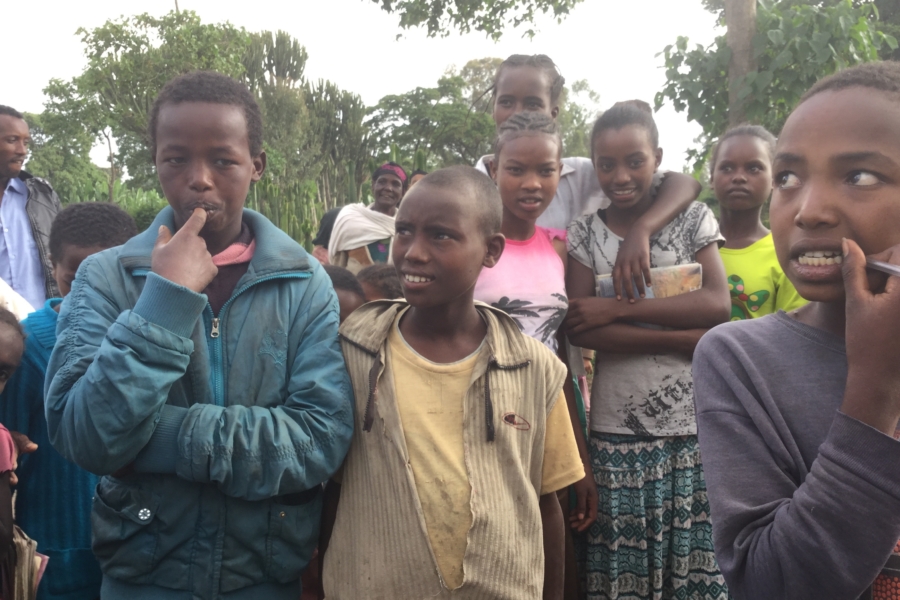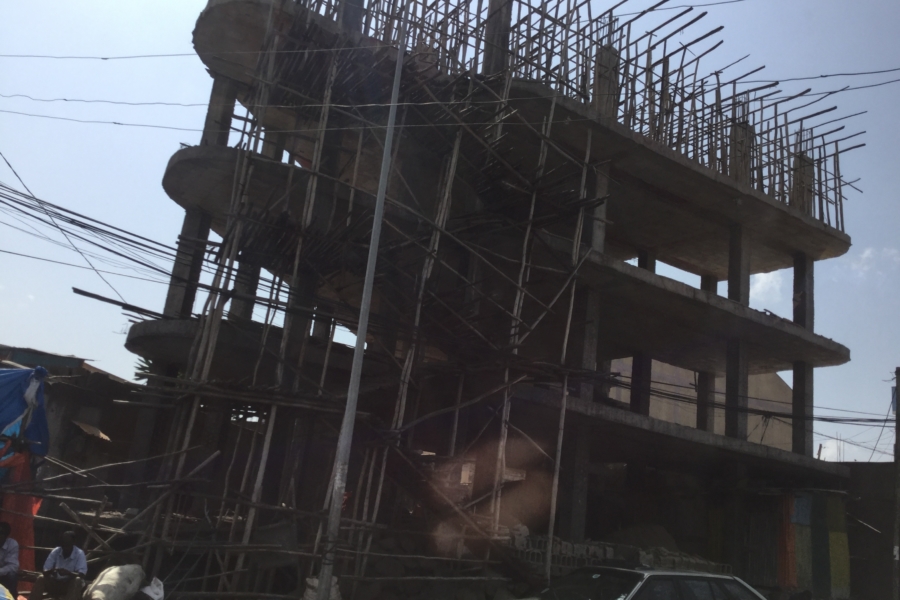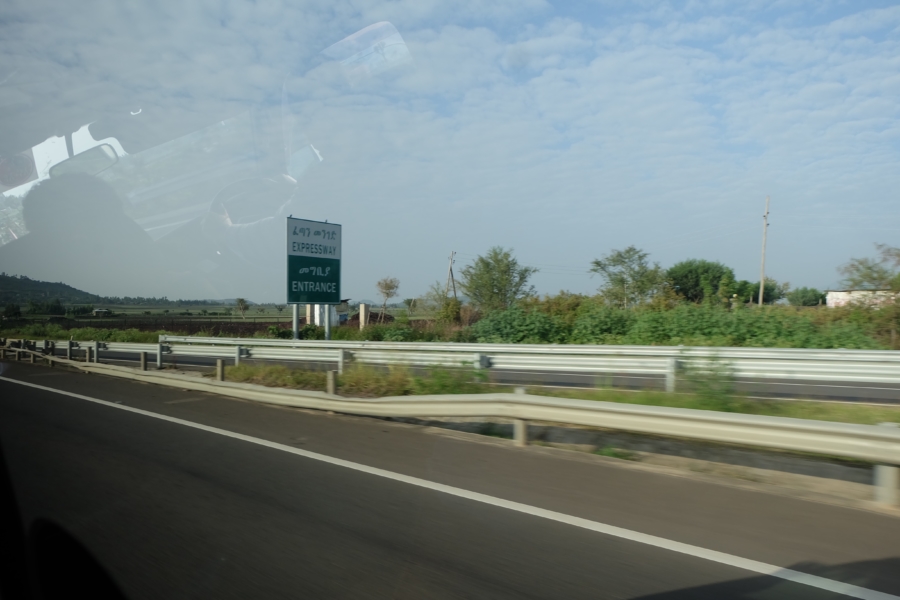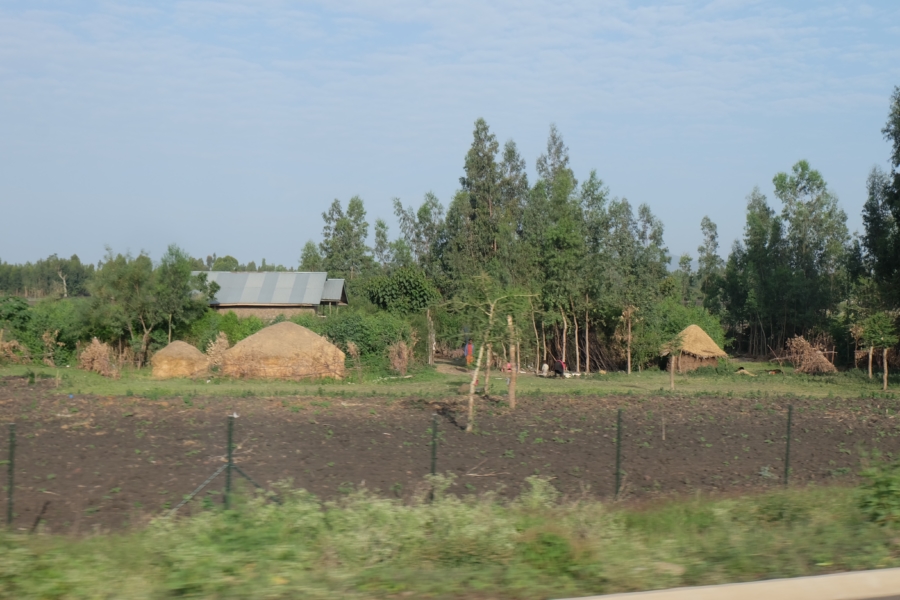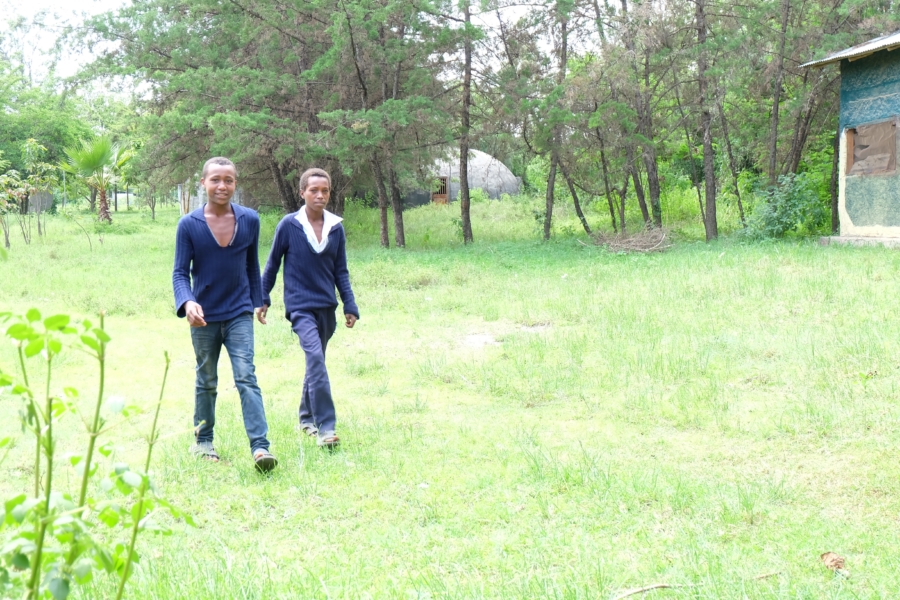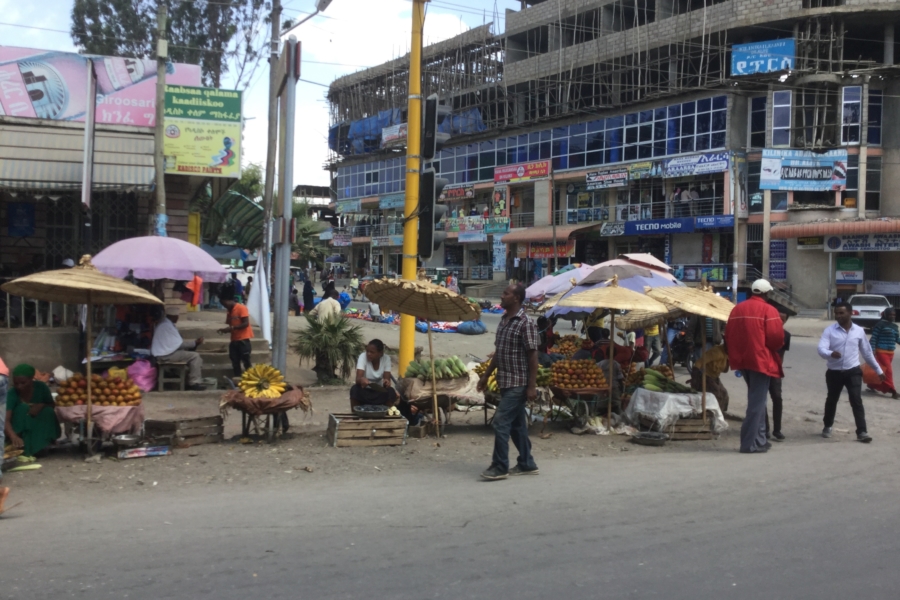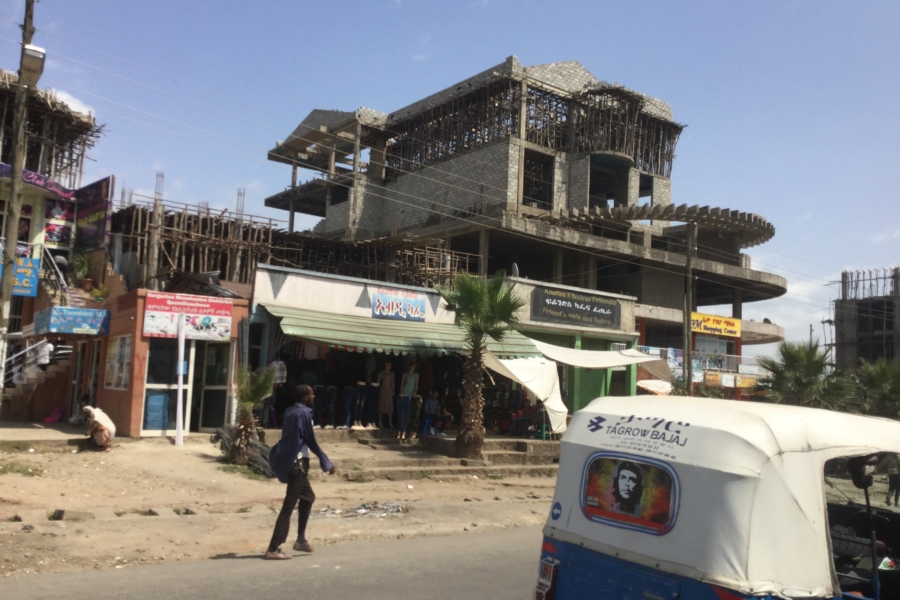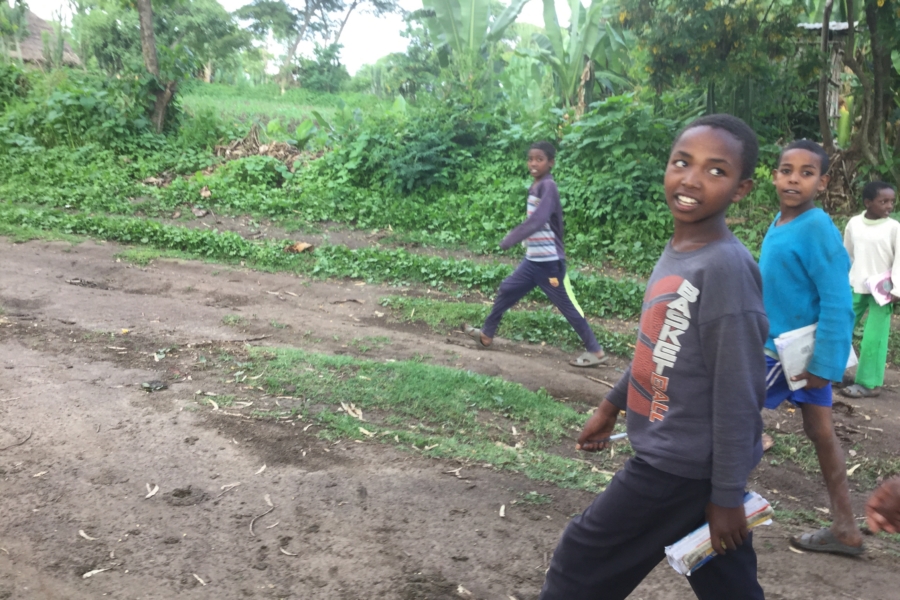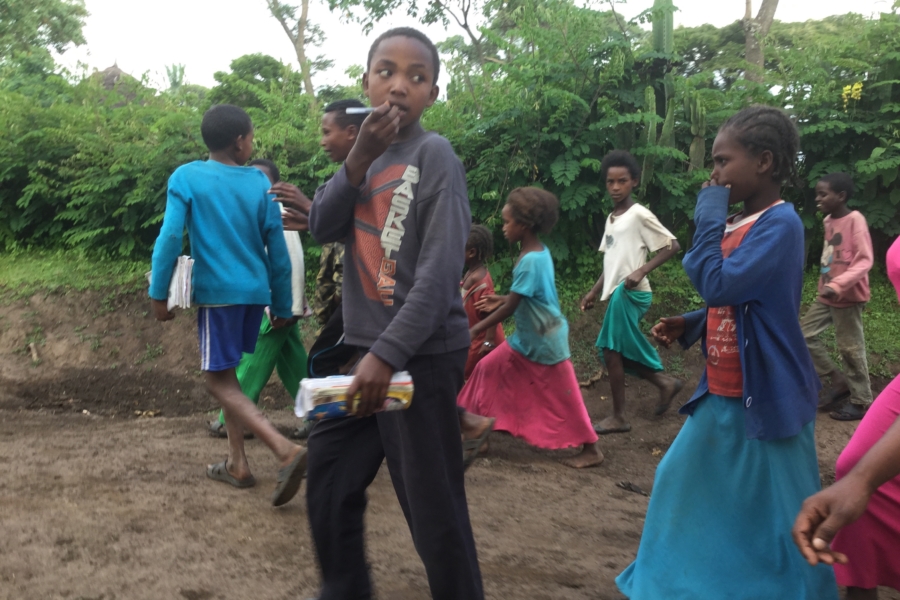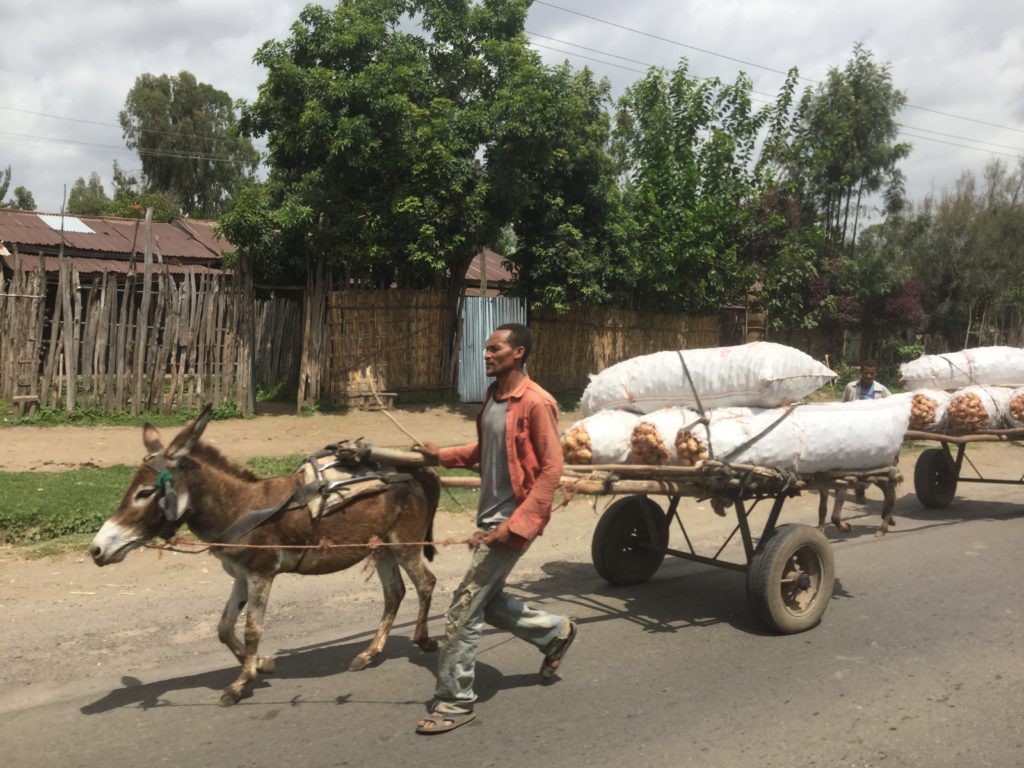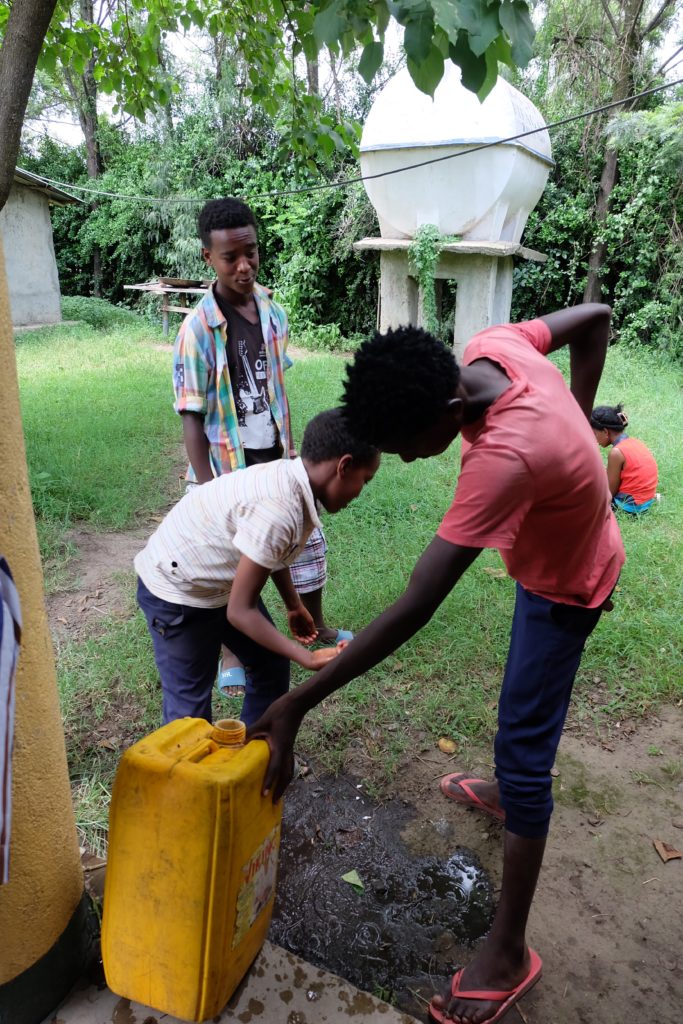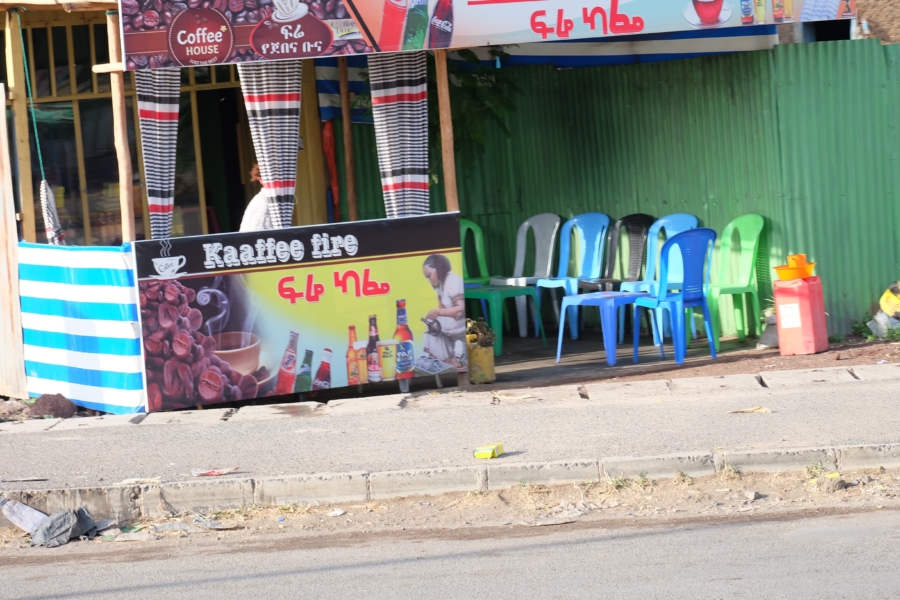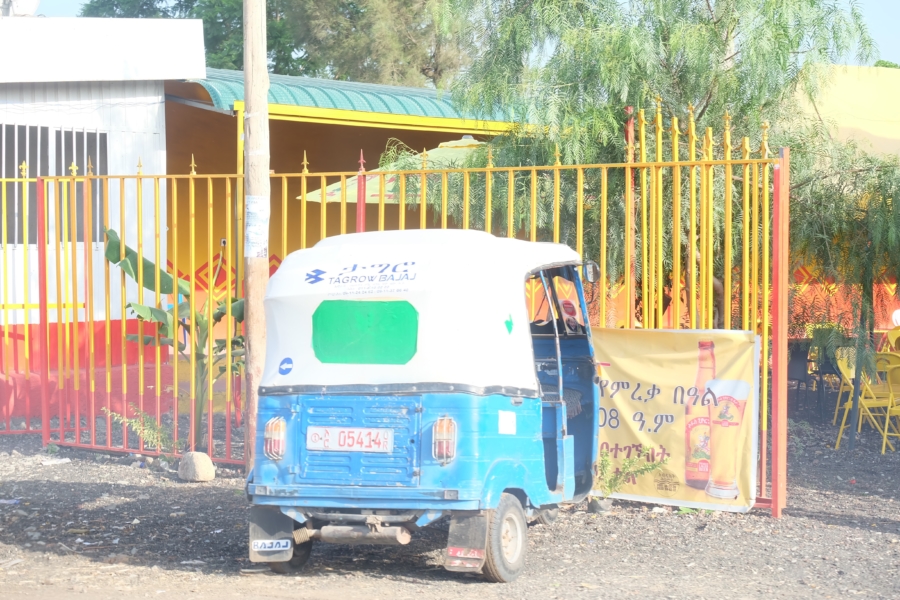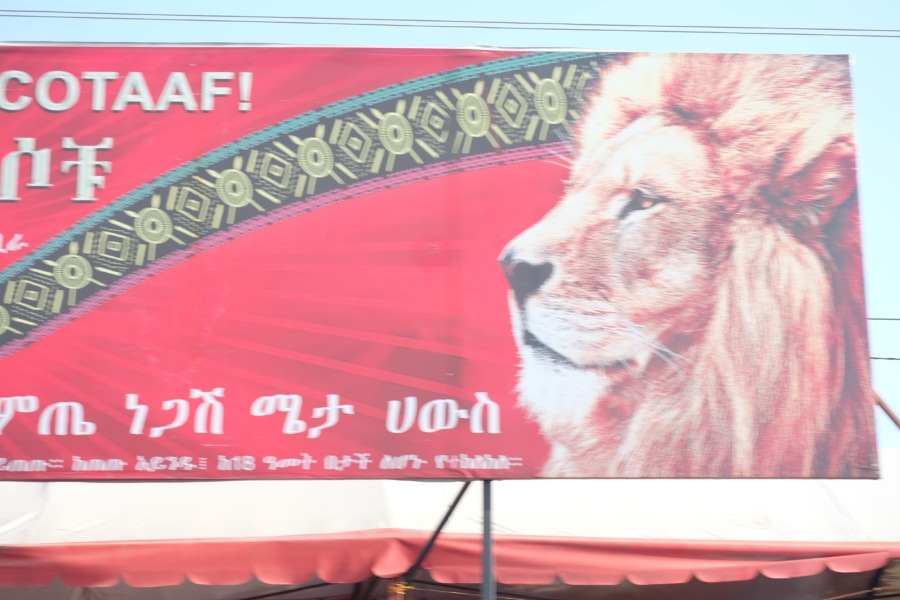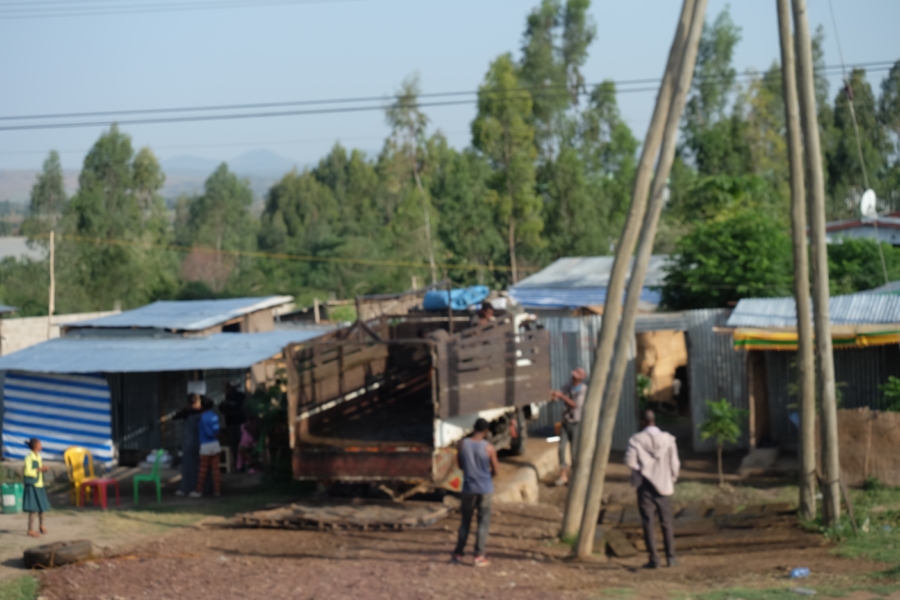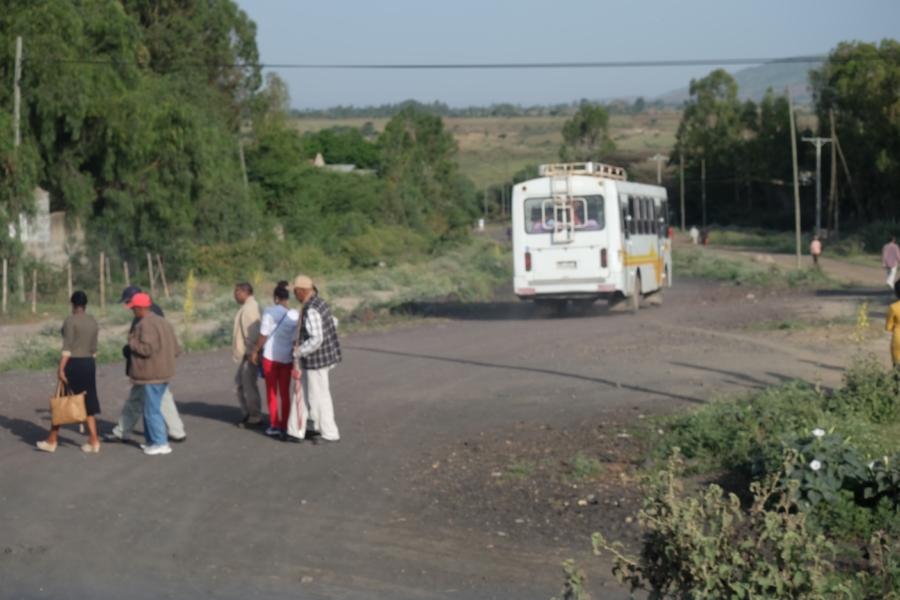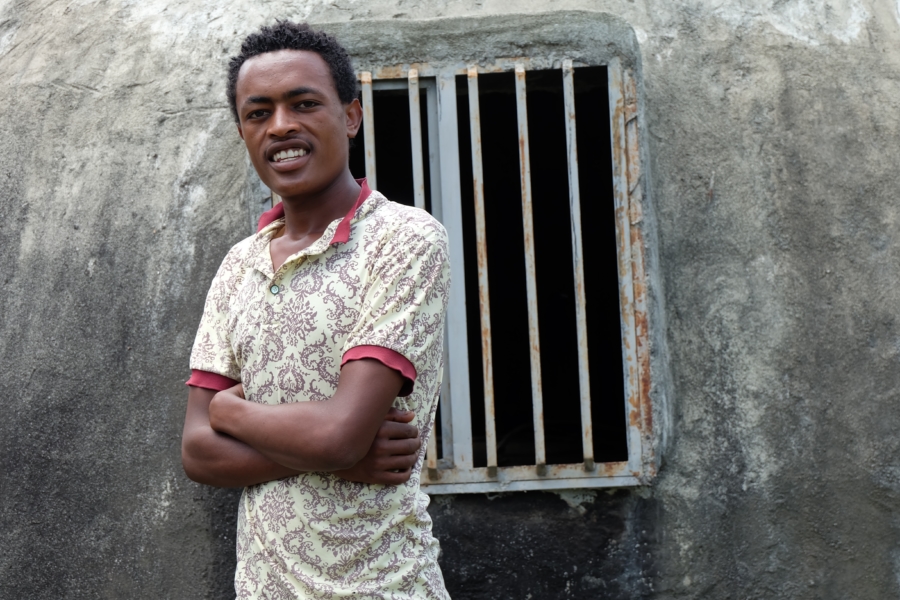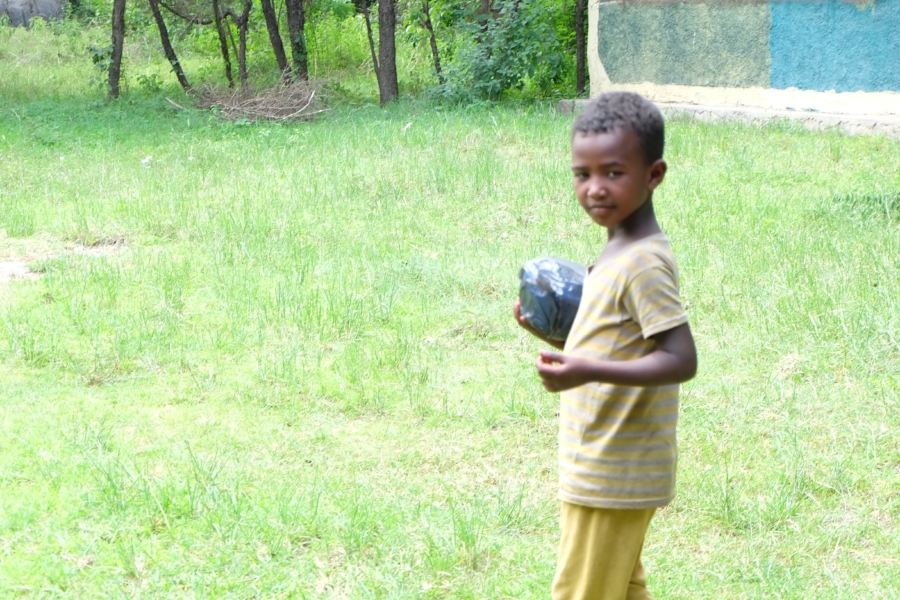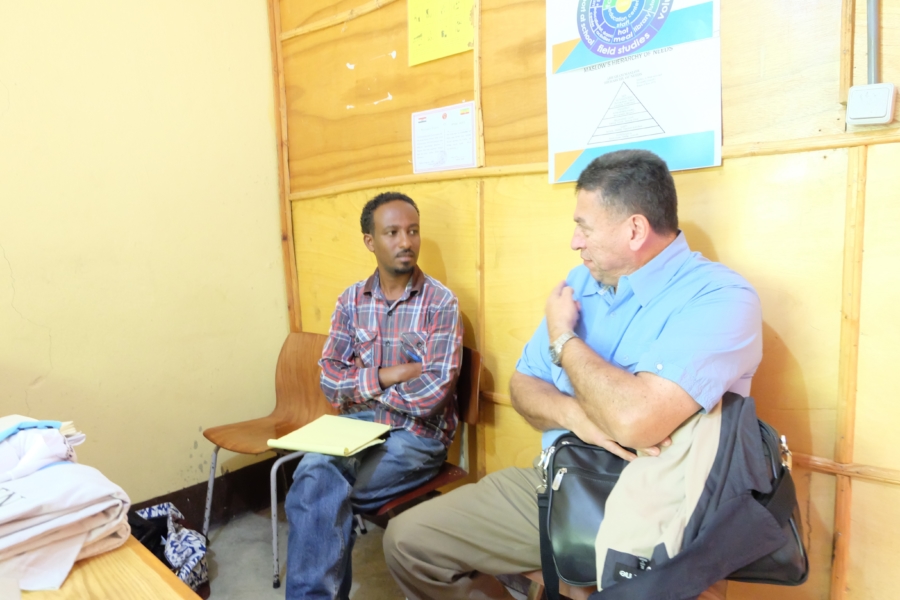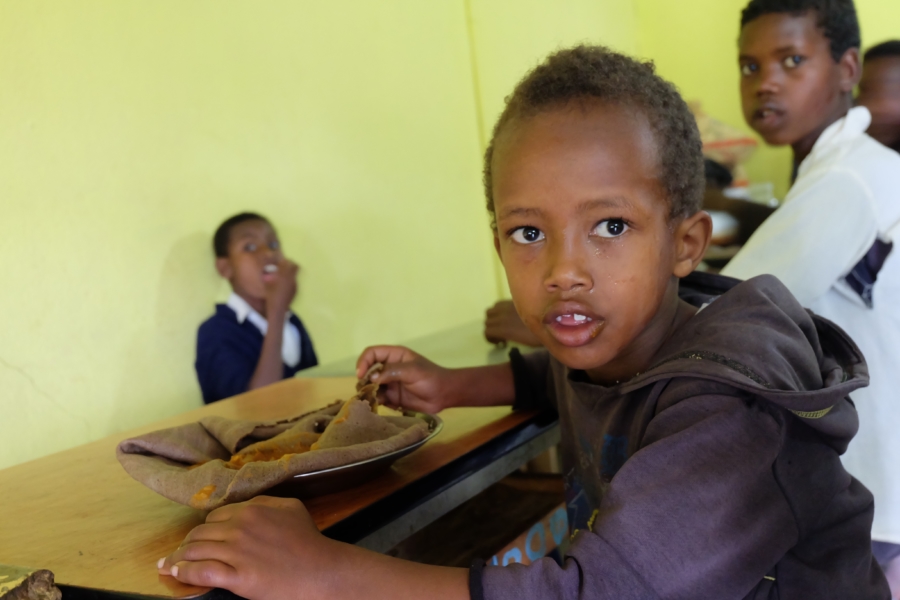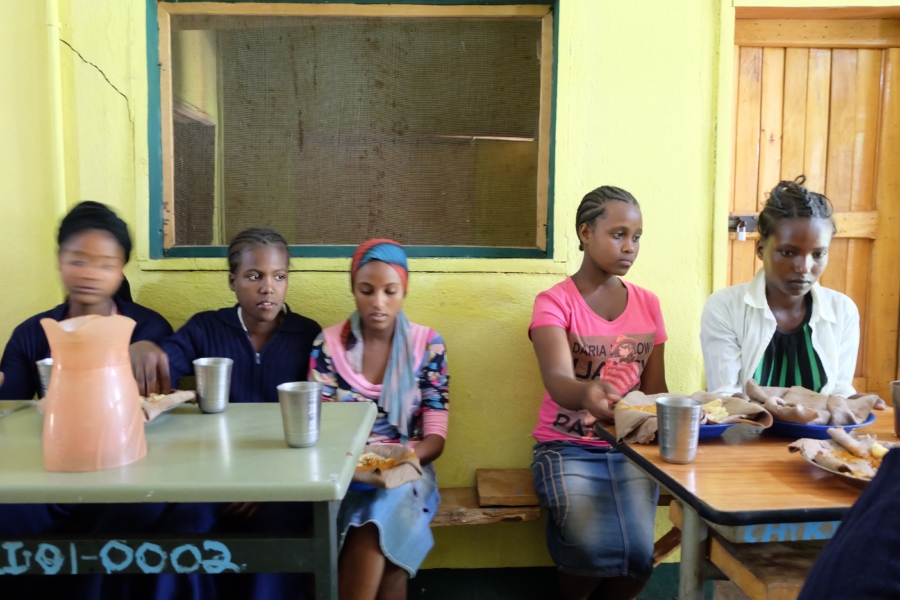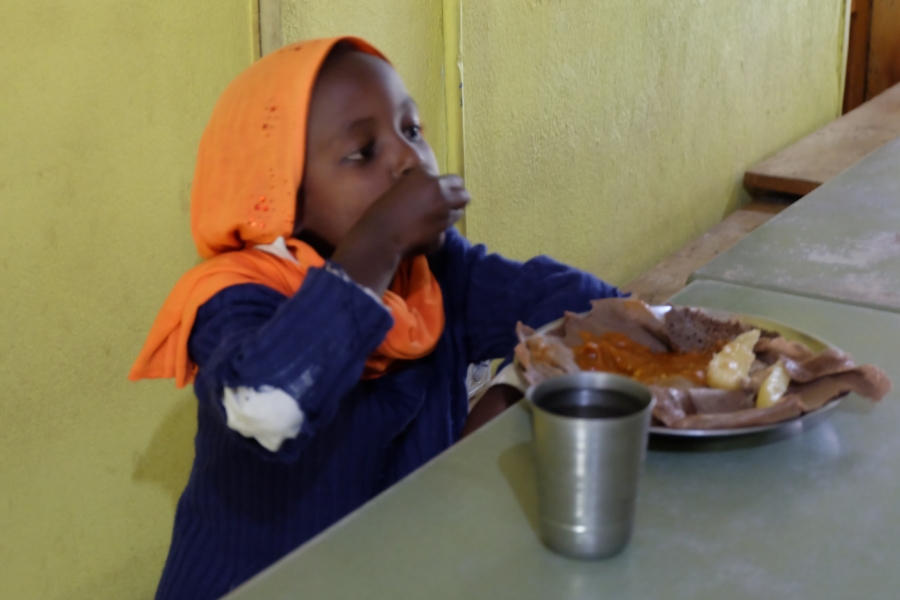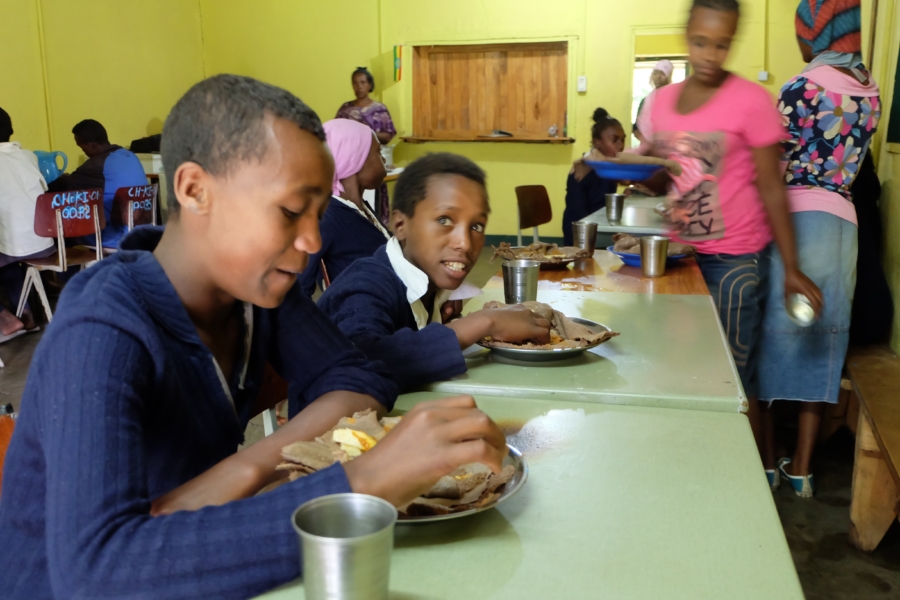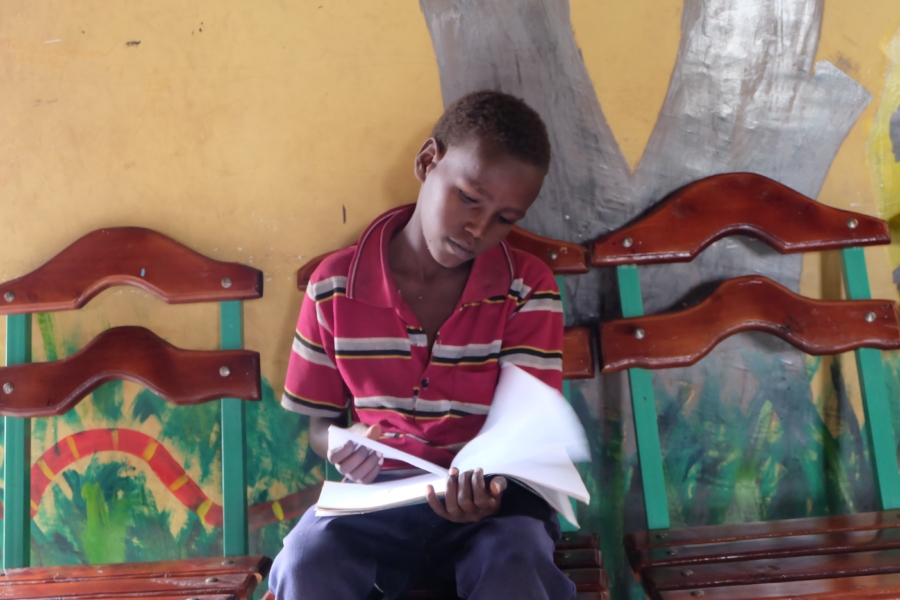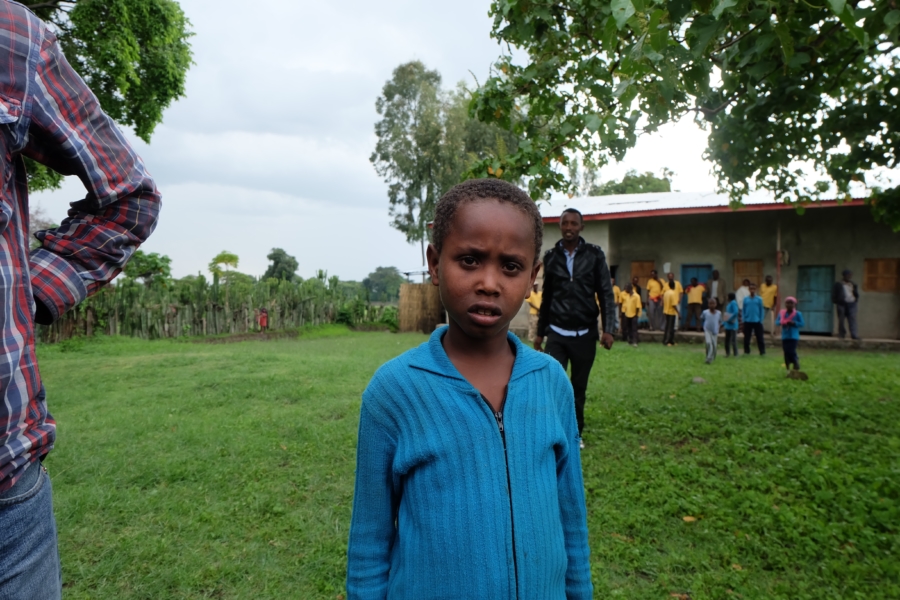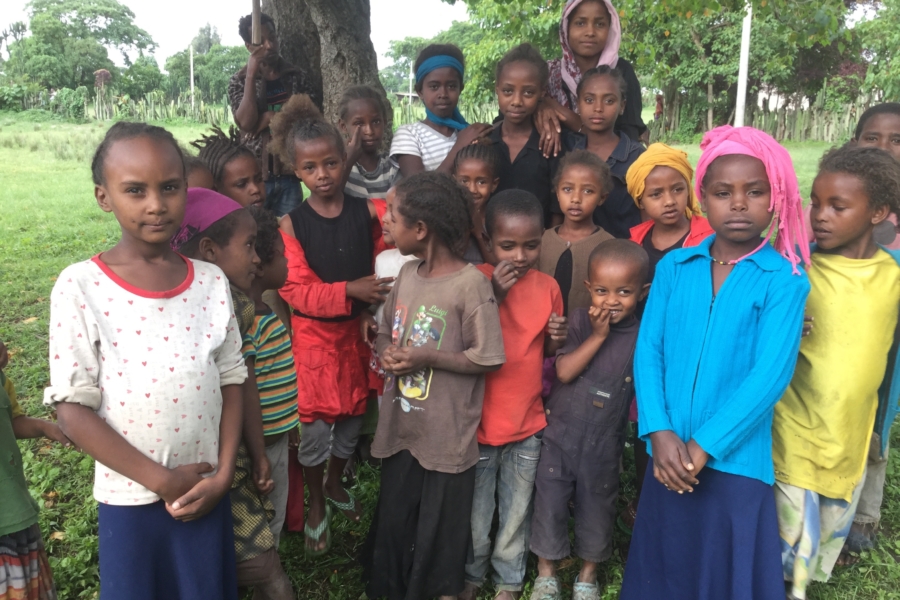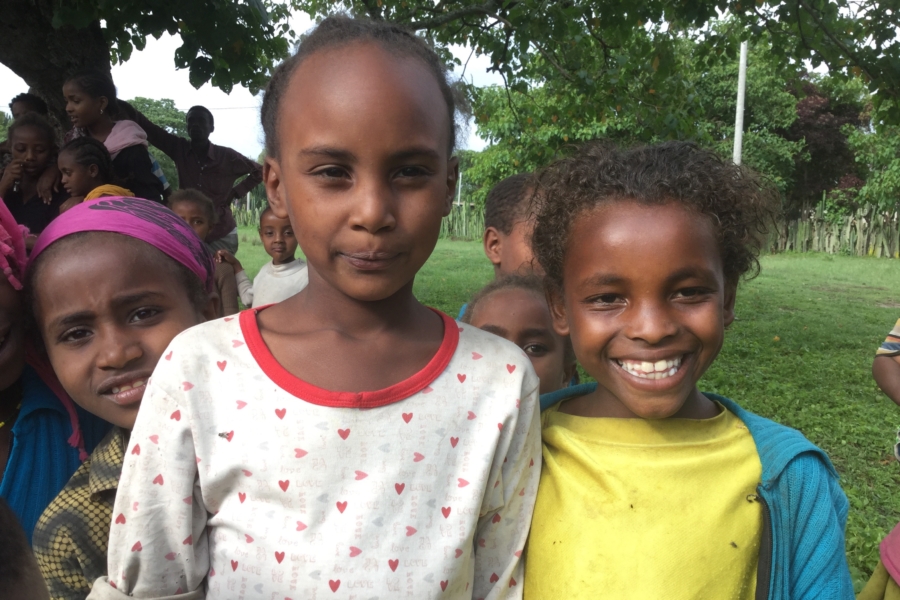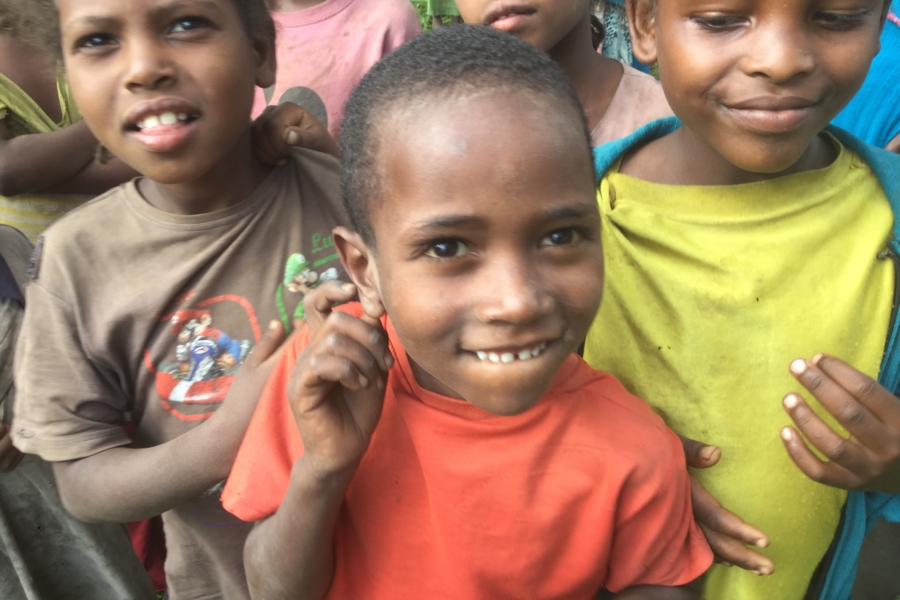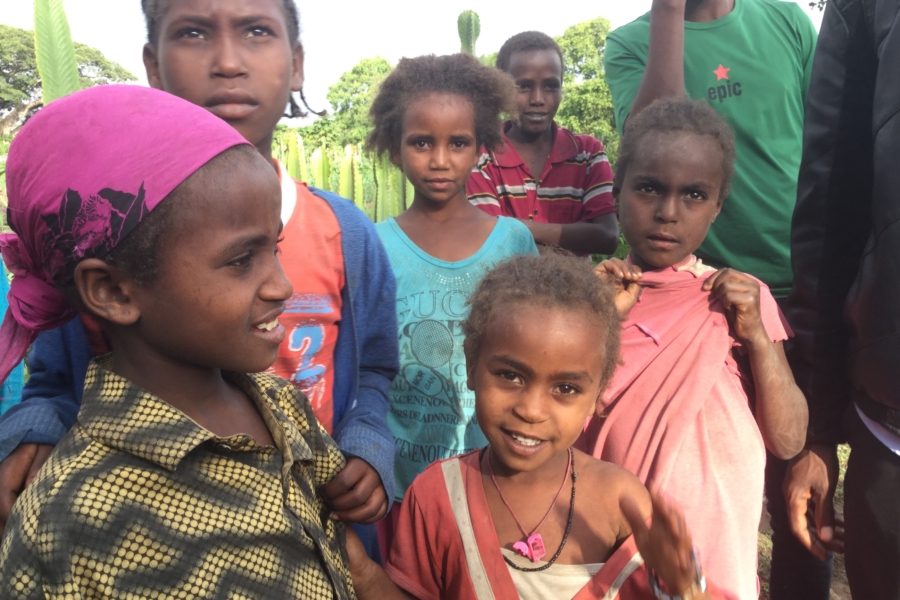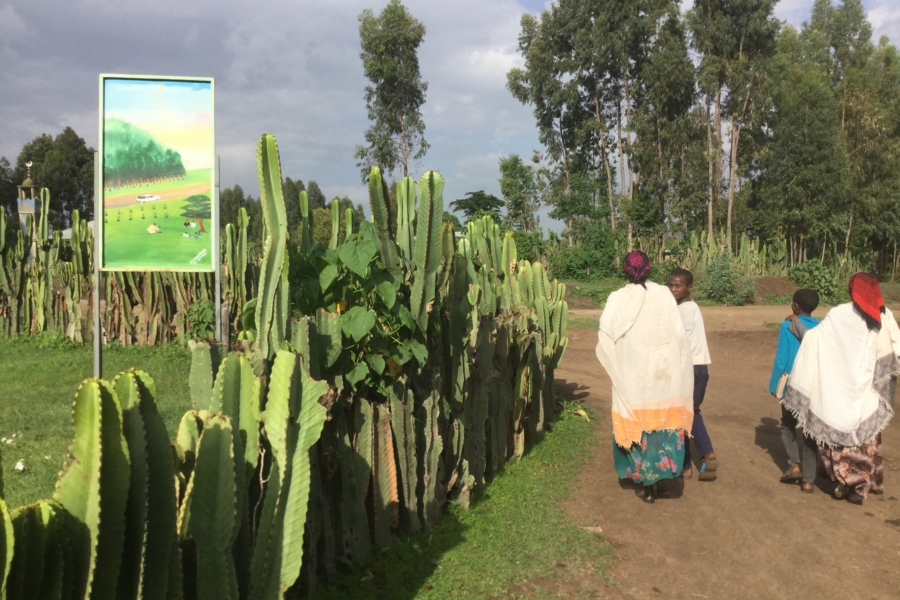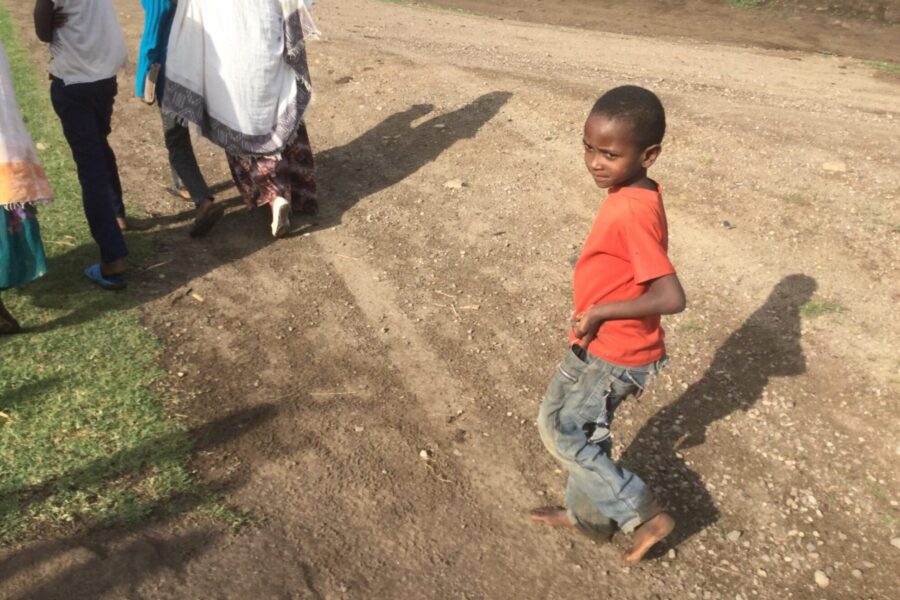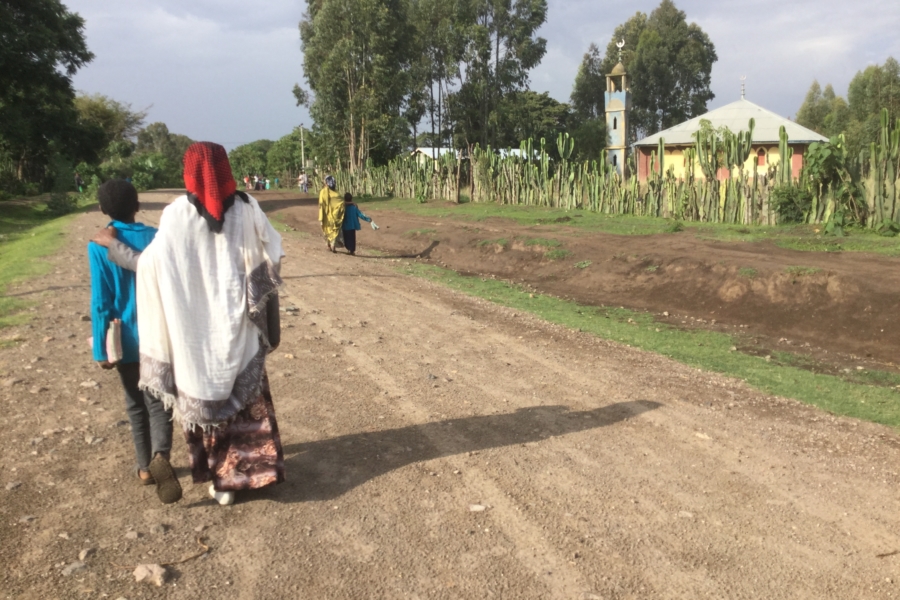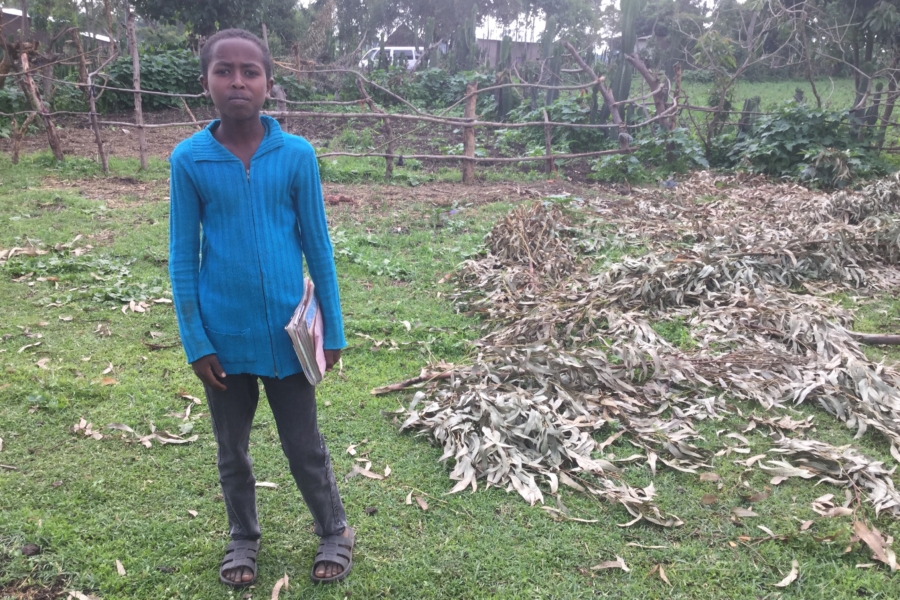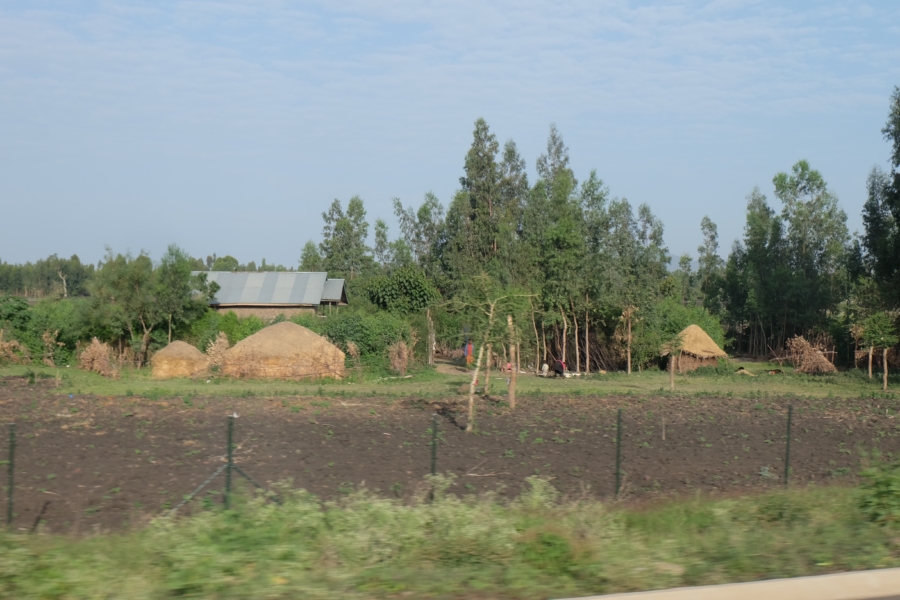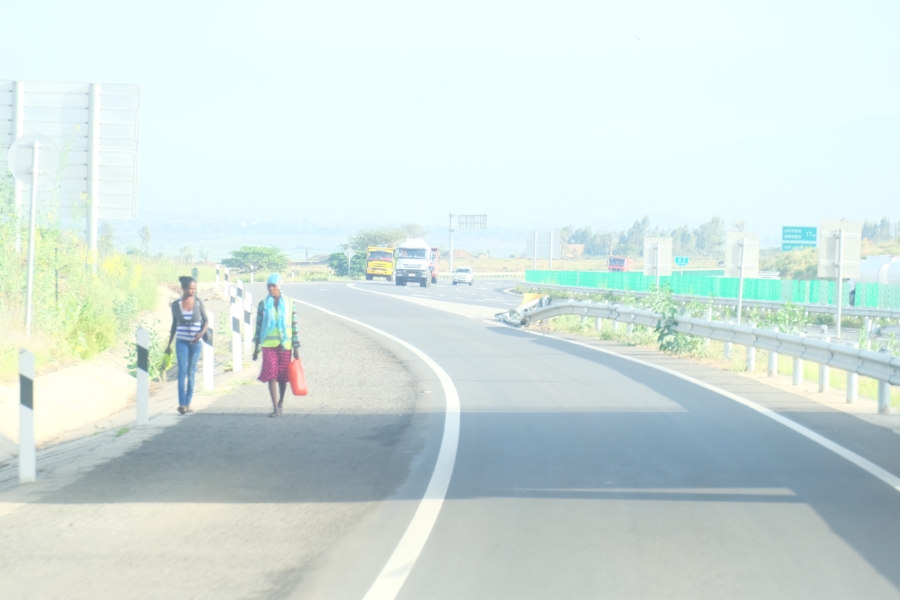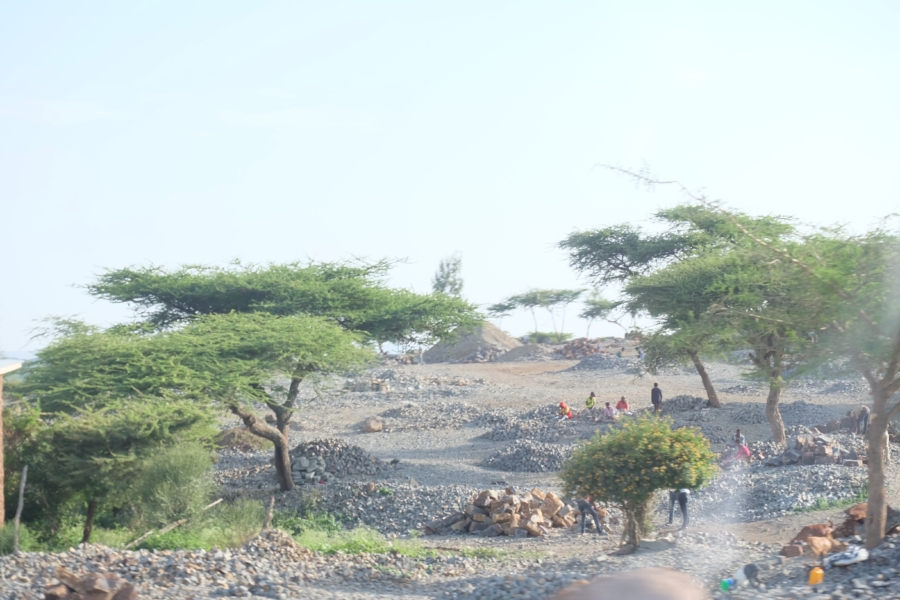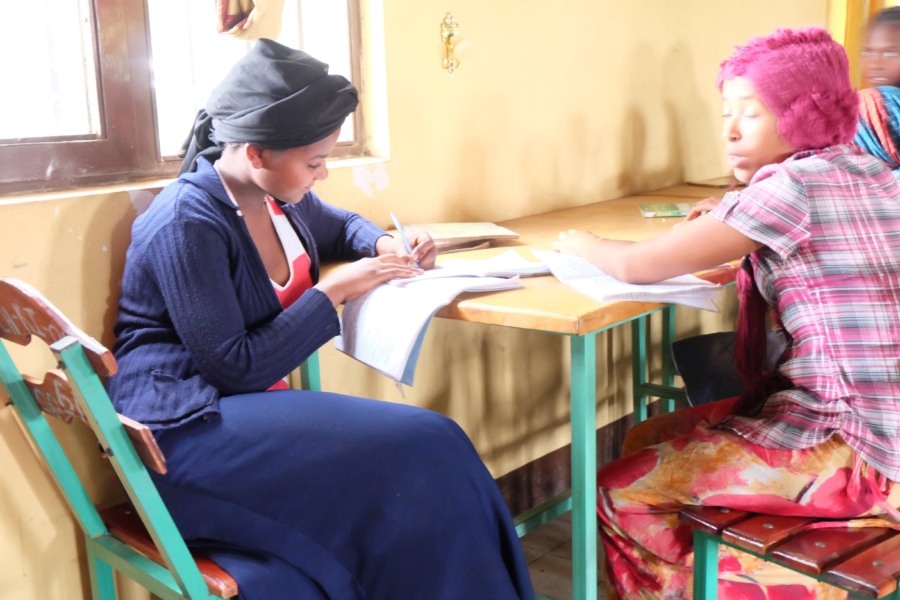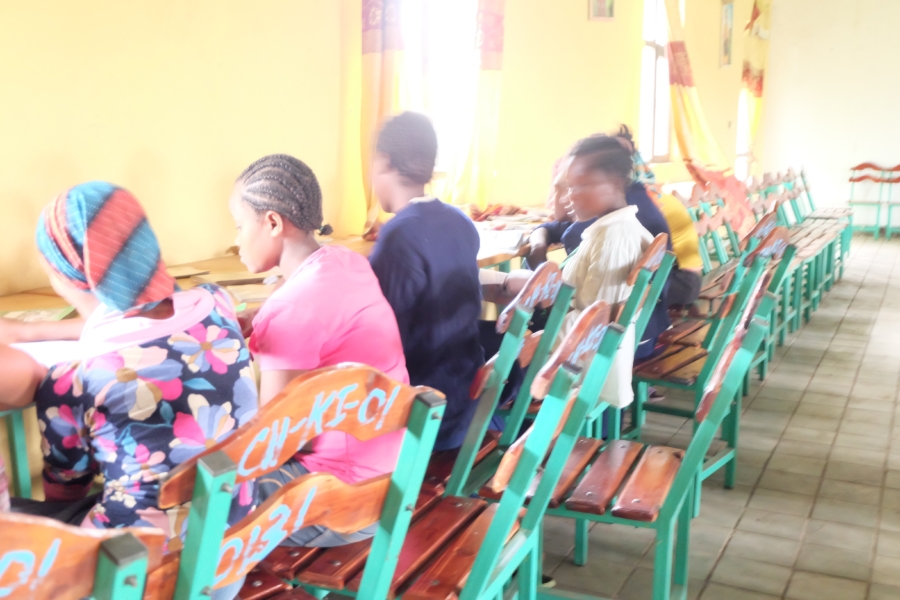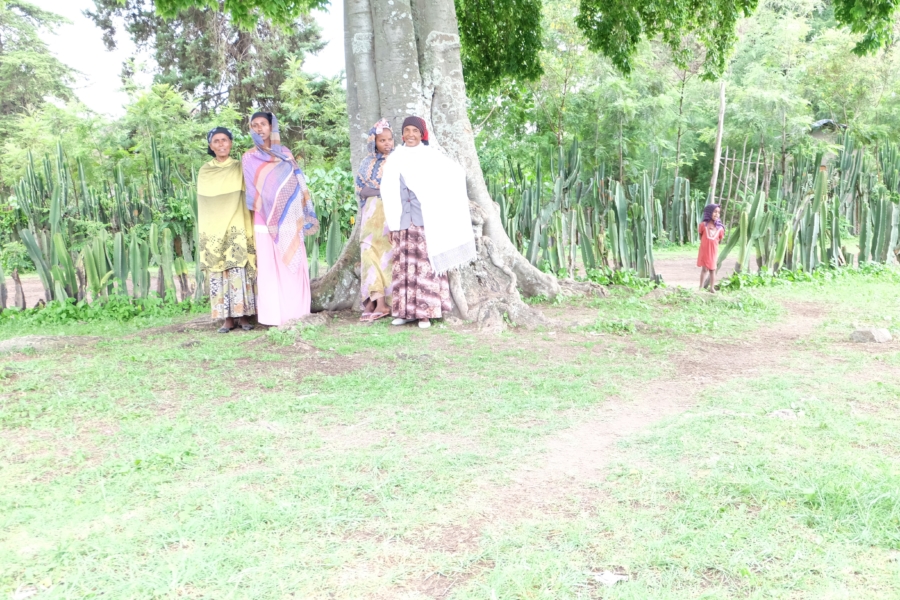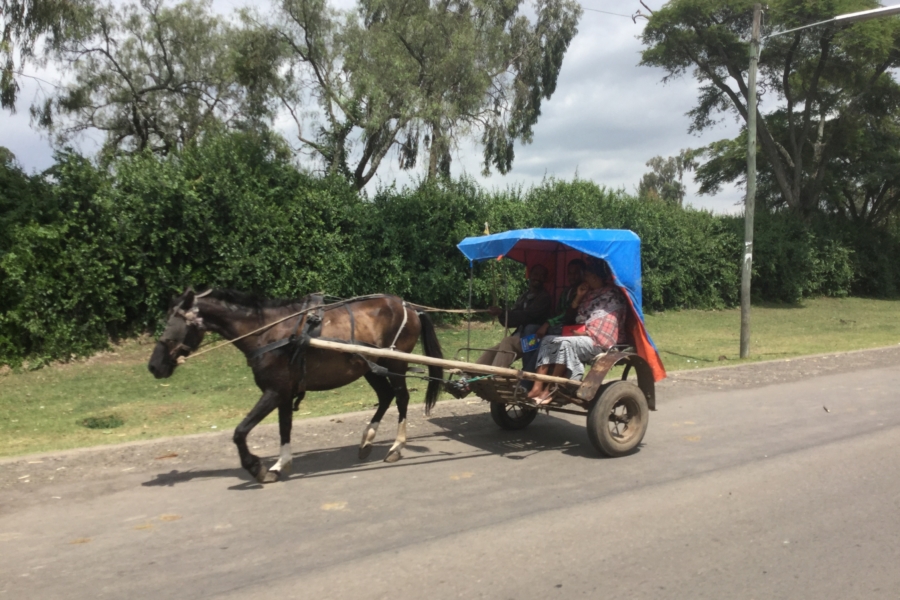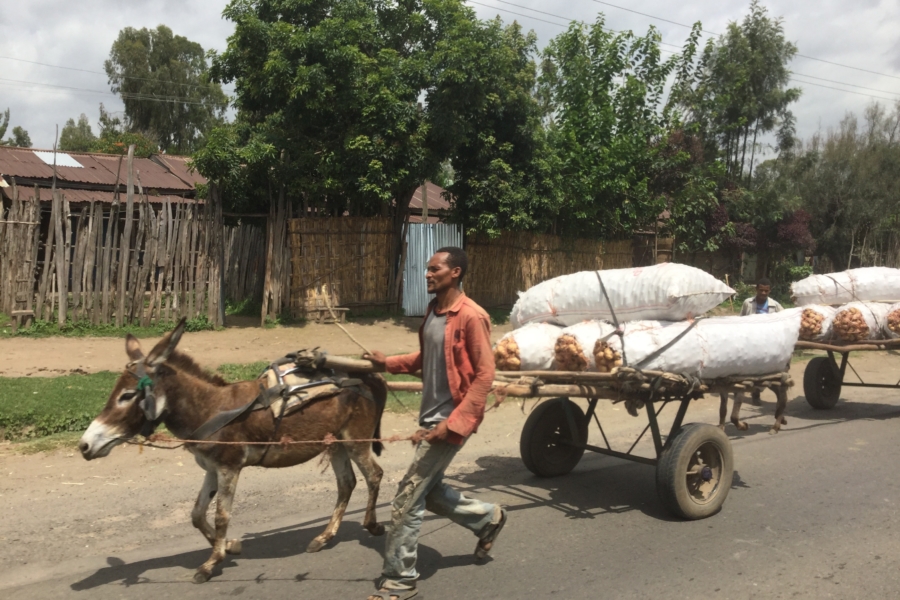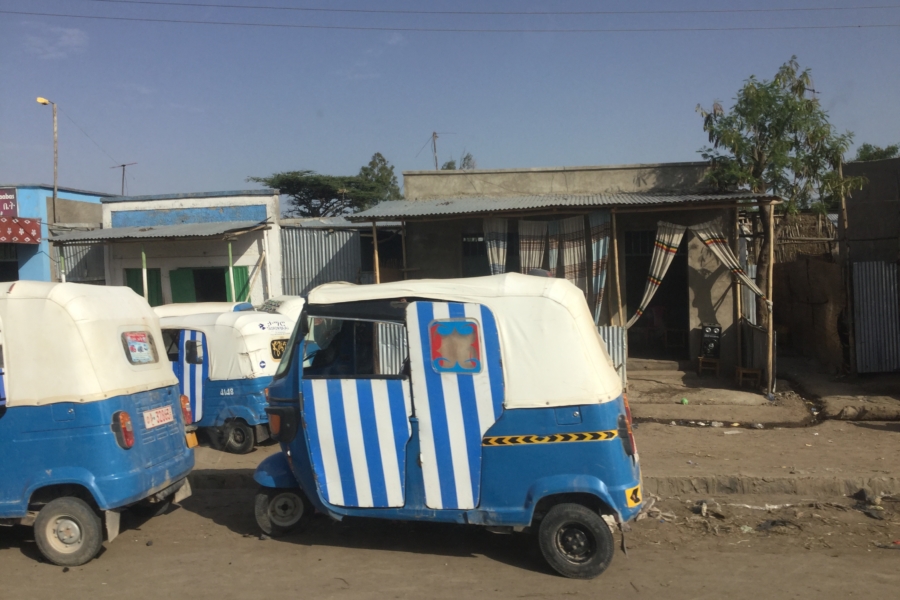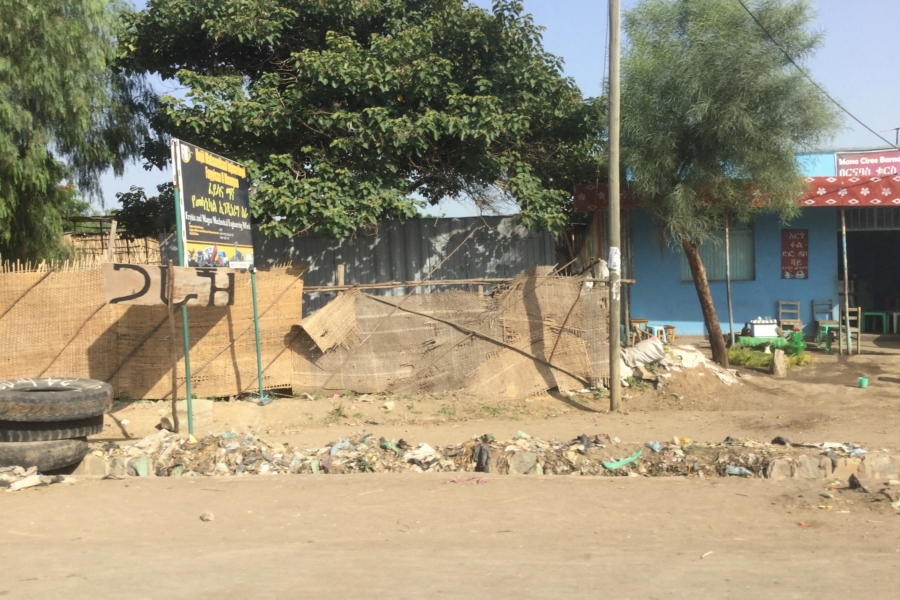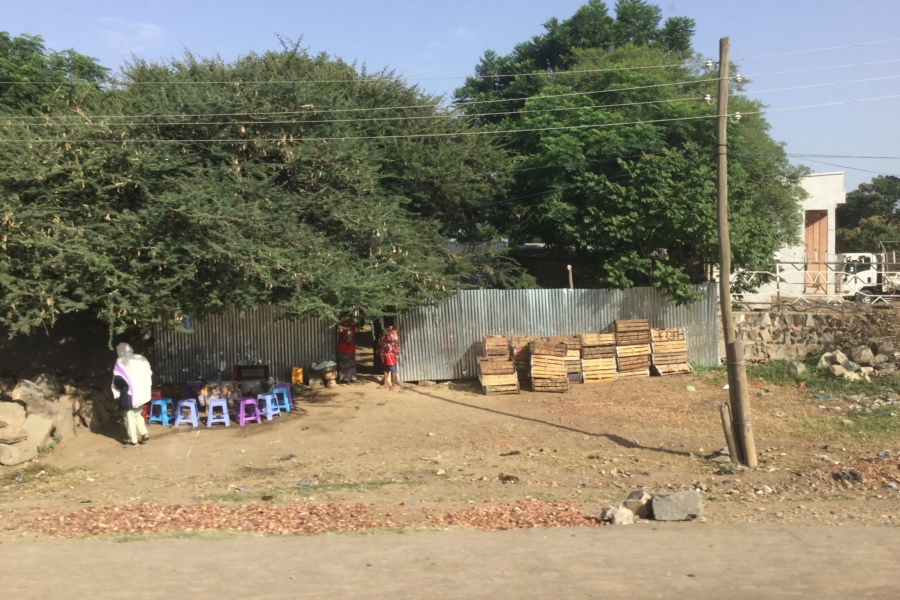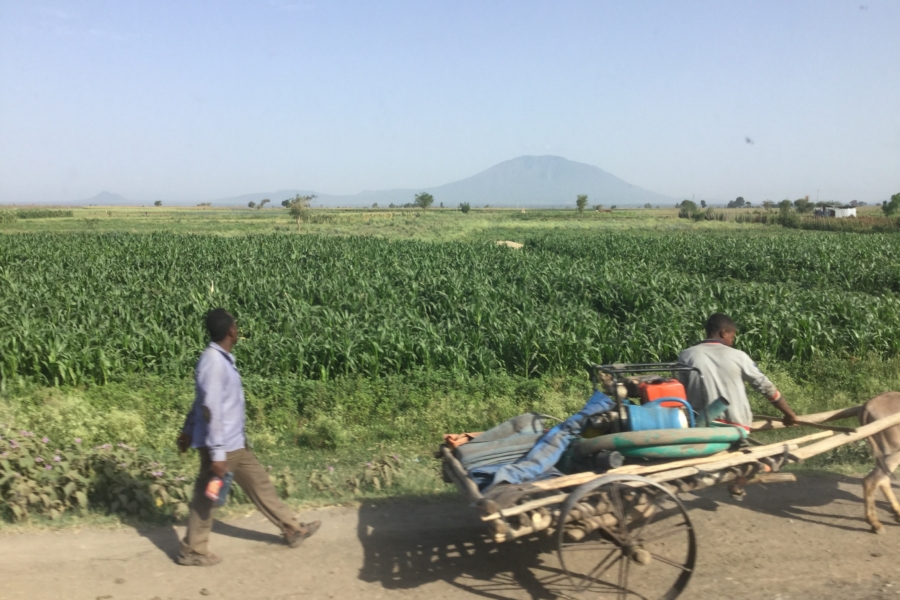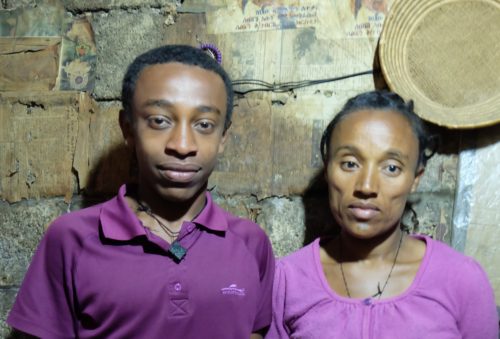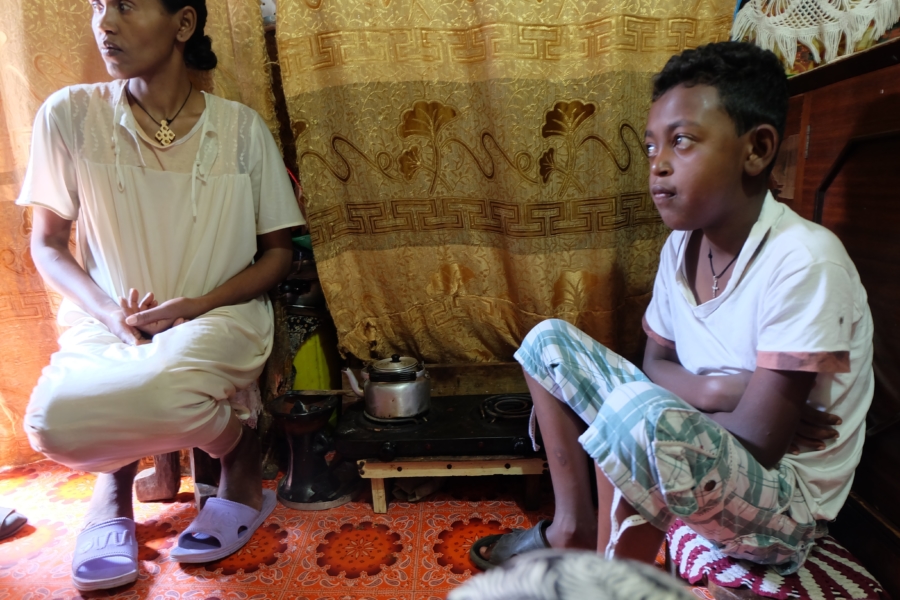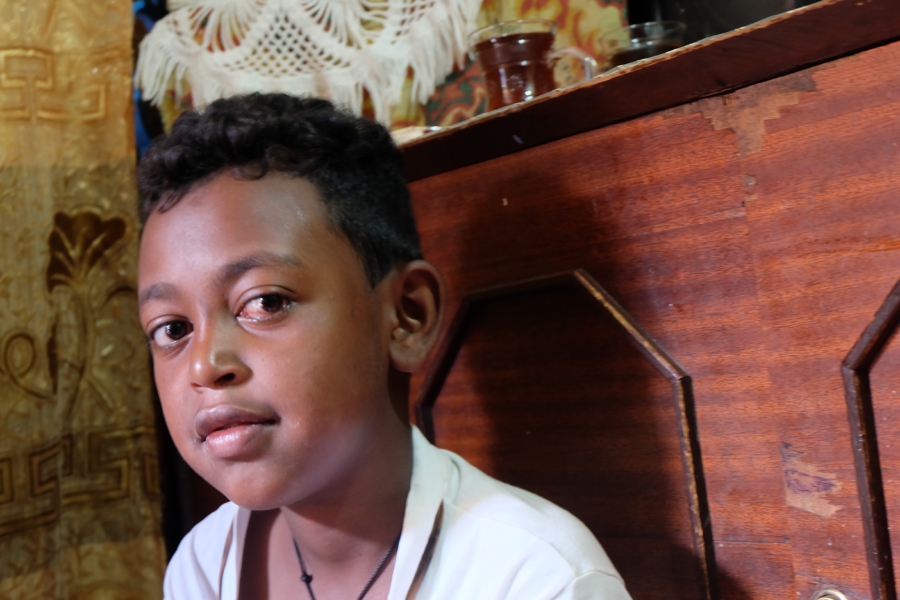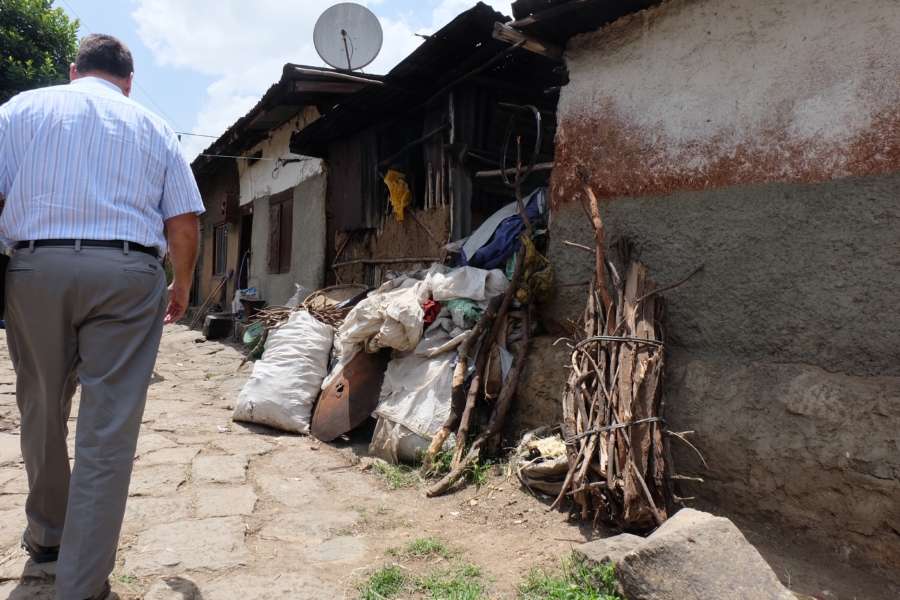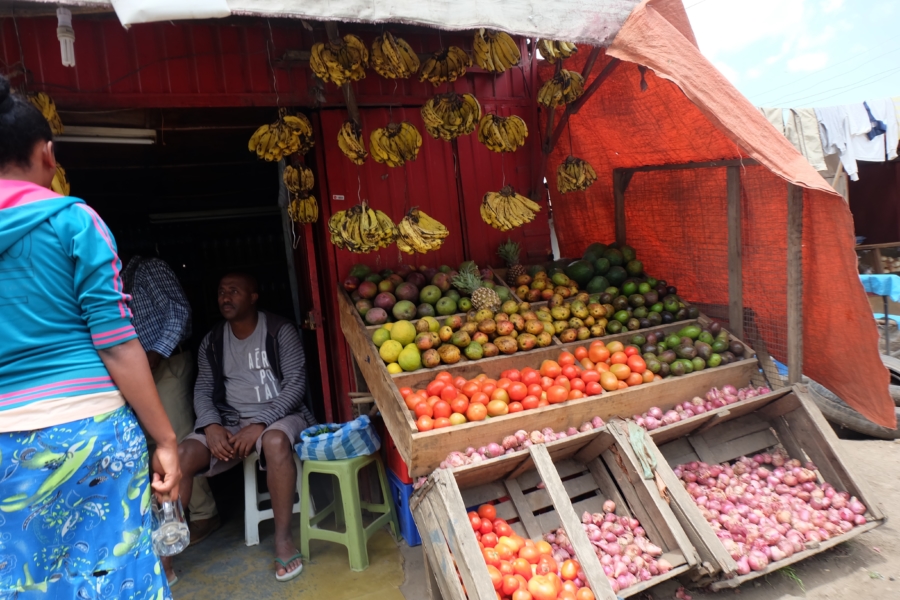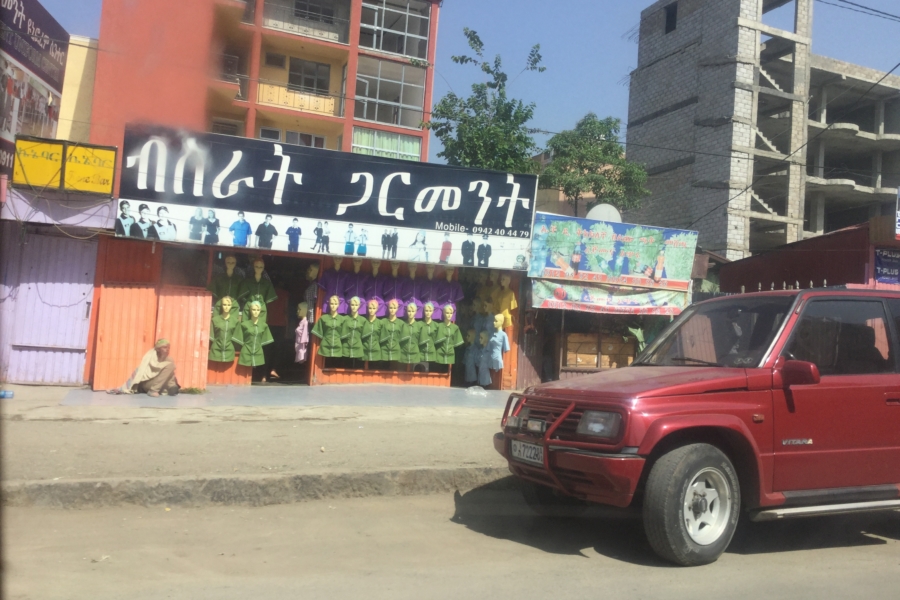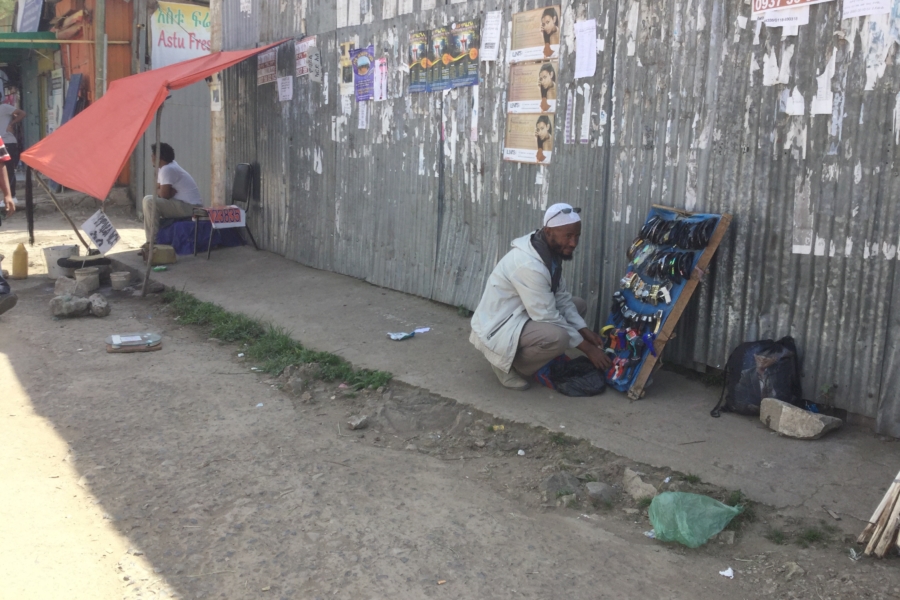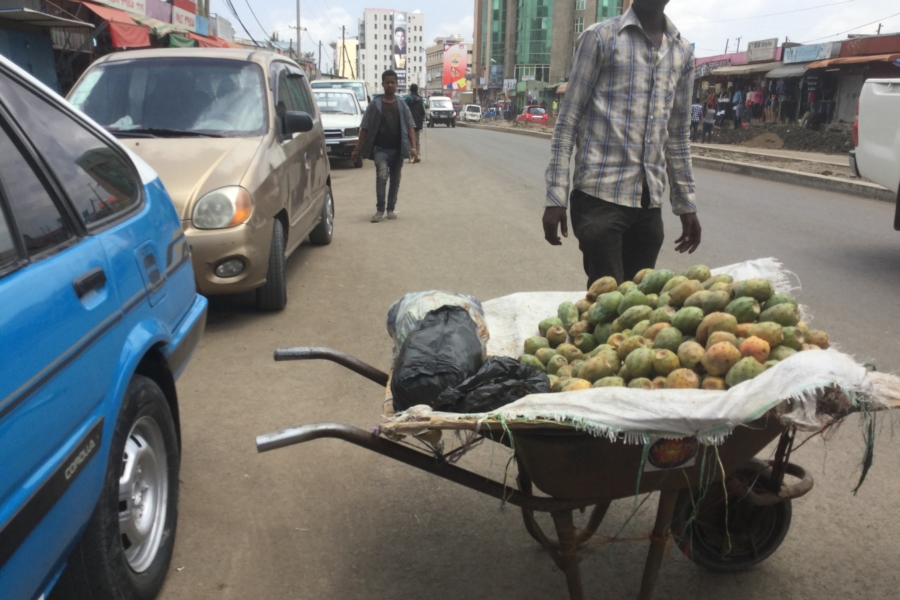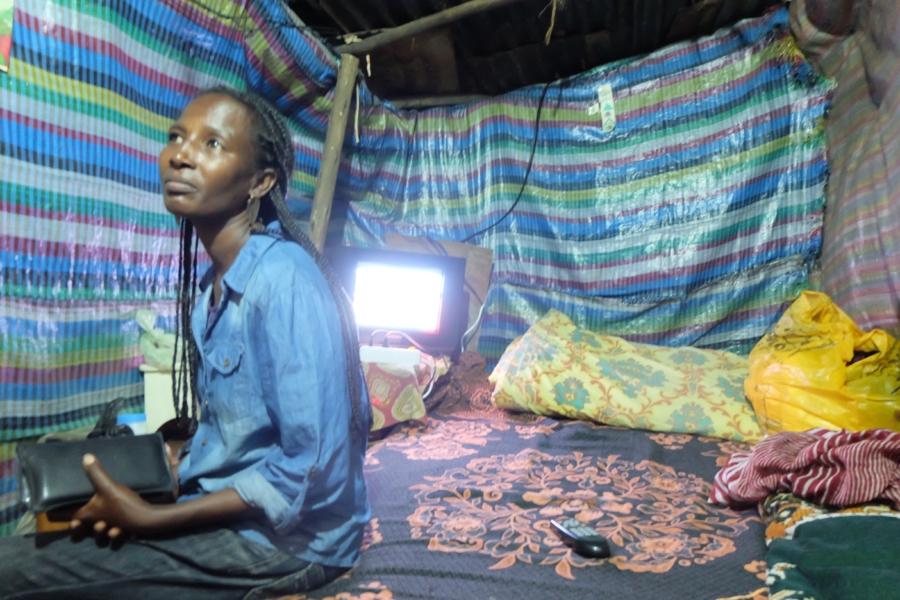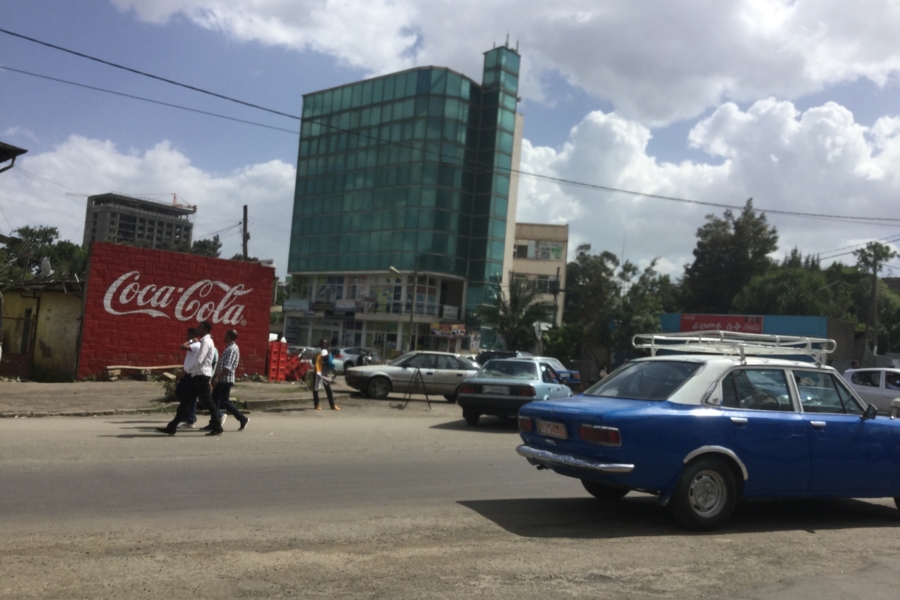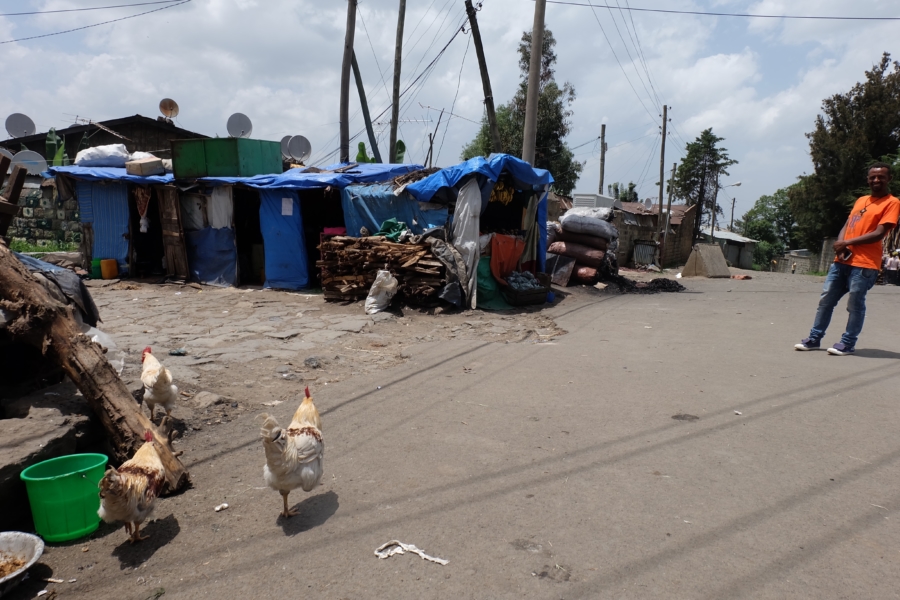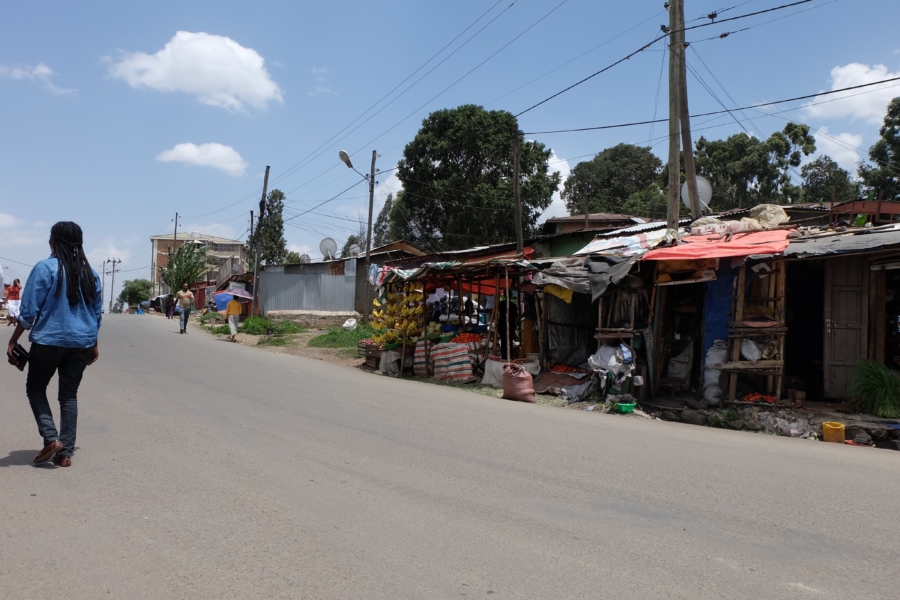Luis and I landed in Nairobi around 6 p.m. As we drove through the city from the airport to get to our hotel, I was surprised to see how developed Nairobi was, especially compared to Addis Ababa. Huge billboards selling bottled water towered over newly built roads, and the sidewalks were lined with green landscaping. We passed tall, gleaming buildings in the city’s business district which reminded me of an American city.
MILES AND MILES
What did not remind me of America was the trip to St. John’s Community Center the next morning. Traffic in Nairobi is terrible at most times of day, and it took us two-and-a-half hours to drive 4 km. On the way, we passed one of the many slums in Nairobi — the Pumwani slum — which we would be visiting later that day. The slum seemed to go on forever as we drove past. For miles we saw shacks crammed together in tight rows.
The city of Nairobi is popularly known as the “Green City in the Sun,” but driving through the endless Pumwani slums, the poverty is heartbreaking, even compared to slums in Addis Ababa and to refugee camps in Uganda. I started to feel overwhelmed, as though maybe I wasn’t prepared for what we were going to see.
Forty years of service
St. John’s Community Center is a primary school located directly across from the Pumwani slums. When we arrived, we met our coordinator, Peter, who is the director of the school. Peter is a soft-spoken and kind man in his 40s, with a boyish face and wide grin. He and Luis have been working together for a long time — St. John’s is one of our oldest affiliate schools internationally. For more than 40 years, Children Incorporated has sponsored children here.
The school enrolls 200 children on a yearly basis. Children not only learn academics, but are also taught trades like woodworking, metalwork, sewing, and cooking so they have skills they need to get jobs when they graduate. As we soon discover on our home visits in the Pumwani slums, it’s important to give children an opportunity to make money and hopefully get out of their current living situation. After seeing the school, we make our way out of St. John’s with Peter, a few of our sponsored children, and some of the school staff. I am expecting to see some harsh living conditions for these children.
NAVIGATING THE MAZE
As soon as we crossed into the slums, my fears became a reality. The slums were worse than I had anticipated. The mud roads were filled with people in every direction. Children played in the streets, women washed clothes in large bins near trash-filled ditches, and men repaired broken motorbikes outside of small, rundown shacks. Some people pushed carts of scrap metal for recycling, and others scavenged through piles of garbage that littered the sidewalks. Larger homes had been broken into smaller sections and added onto over and over again. Materials such as tin and wood were used to create small, make-shift rooms where families lived together, sometimes multi-generationally. They were literally living on top of one another.
Between 70,000 and 100,000 people live in Pumwani, most in houses that are the size of an American bathroom. They have no running water, very little electricity and no means to cook or wash indoors. It is claustrophobic to walk around in the slum, even though we are outside, and it is very dangerous. Crime is rampant because young men who have no education and no work get involved with drugs and crime to make money.
It is amazing to watch the children make their way through the slum. They seem to know their way intuitively. Of course, they do it every day of their lives, but to me, it’s very confusing. The children duck under metal sheets and squeeze between buildings that are barely wide enough for them to fit.
a stitch in time saves a life
The slums are so packed and so hot that it feels as though the world is crushing down on me. There is no escape from the noise and the filth; it feels hopeless here, and there doesn’t seem to be a way out. The people here are closed in, isolated, and the children have nowhere to go. Even if they could get out, where they would go and what would they do?
Just as things appeared to be all too hopeless, we met Mwanaharusi. We were brought to the home of this former Children Incorporated-sponsored child who had graduated from St. John’s Center a number of years ago. Mwanaharusi’s sponsor helped her through school, and soon after graduating, she was able to save money to purchase a sewing machine. She has turned her talent into a business and makes a living fixing garments for other people living in the neighborhood.
The mud roads were filled with people in every direction. Children played in the streets, women washed clothes in large bins near trash-filled ditches.
She works out of her home, which is a dark, one-room shack. As we watch, Mwanaharusi sits at a small table, demonstrating how her machine works. It takes a long time to make garments because there is little room for her to spread out; the foot-powered sewing machine takes up most of the room she shares with her mother and grandmother. A couch and one bed fill the floor space. As Luis and I sit and watch her, a few neighbors come by, eager to have her repair their clothes. It is obvious that her work is in demand and she has picked a good business to start in this area.
A long, slow climb up
Before we left, Mwanaharusi brought over something she had sewn – a beautiful, brightly colored shirt. She told us that she had made it for her sponsor and asked for us to deliver to him back in the United States. I don’t know the going rate for a shirt in Pumwani, but considering the quality and care it took to make, Mwanaharusi’s gift speaks volumes of what her sponsor means to her — and that breaking the cycle of poverty doesn’t happen overnight.
Child sponsorship doesn’t guarantee that a child will overcome the crushing poverty we saw in Pumwani, but it does provide an education, which is their only shot at getting out of the slums.
***
HOW DO I SPONSOR A CHILD IN KENYA?
You can sponsor a child in Kenya in one of three ways – call our office and speak with one of our sponsorship specialists at 1-800-538-5381, email us at sponsorship@children-inc.org, or go online to our donation portal, create an account, and search for a child in Kenya that is available for sponsorship.

